Best phono preamps 2025: budget to high-end, tried and tested
A turntable's best friend
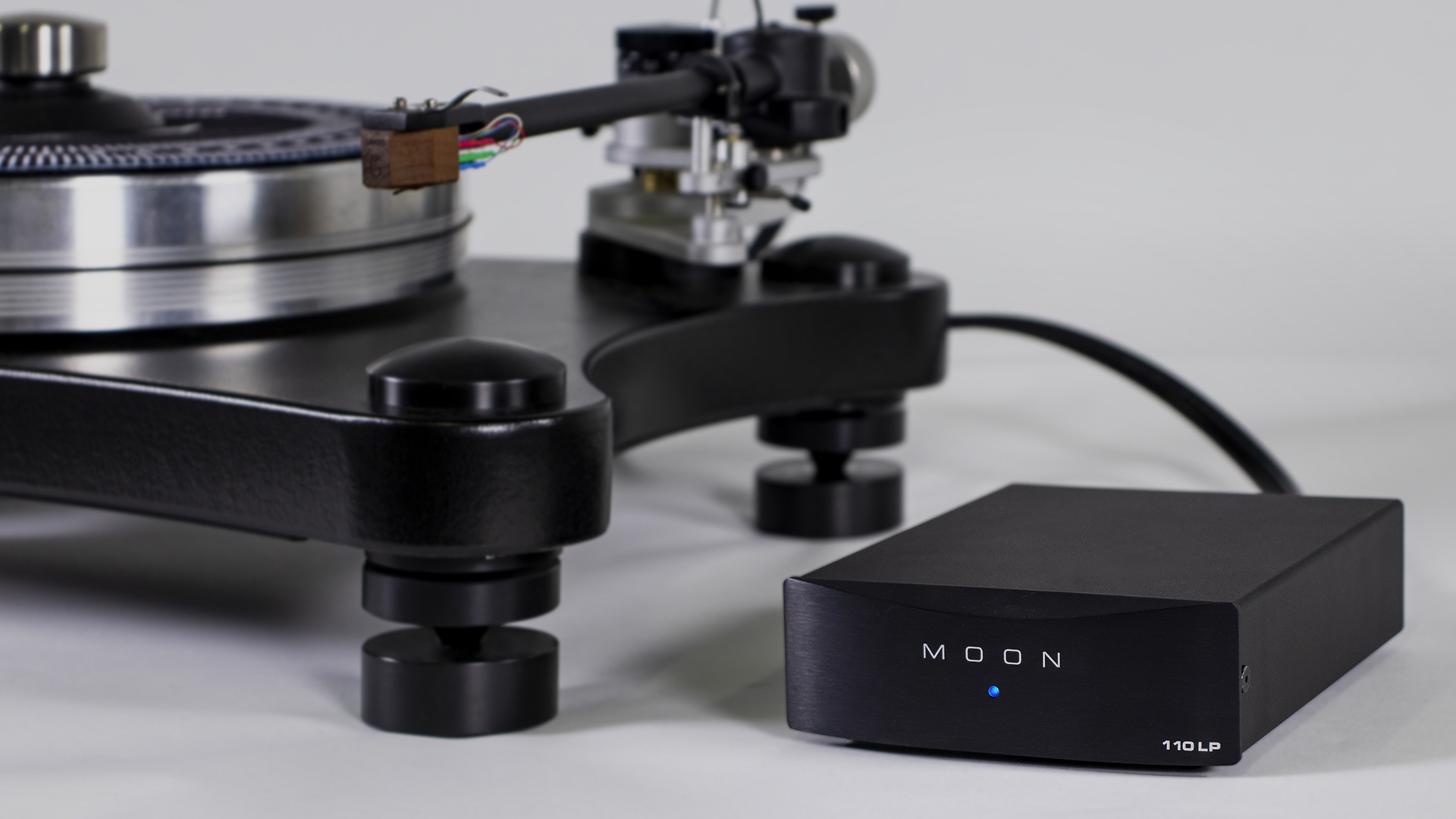
If your music system includes a turntable, a phono preamp is a must-have component in the product chain. Also called a phono stage, this component is essential for the playback of vinyl records.
A phono stage is what makes the music signal recorded in the vinyl groove audible through your amplifier and speakers – it raises the turntable's audio output and adds standardised equalisation for a tonally even presentation.
Many stereo amplifiers, turntables and active speakers now come with a phono stage built-in, but if they don't, you will need to buy a separate phono stage to complete your vinyl system and hear your records.
Upgrading your existing phono stage or opting for an external one is also a great way to upgrade your turntable system's sound beyond what's possible with the built-in versions. If you're thinking of giving your vinyl system a sonic lift, we would recommend considering a phono preamp upgrade first.
Phono stages can be compatible with moving magnet or moving coil cartridges – or even both. Check which type your turntable has before choosing a new phono stage. You can check out our buying advice on choosing the right phono preamp for you, or scroll down to see our list of the best models we recommend, new and old, across all budgets and sizes.
Every model below has been rigorously tested by our experienced review team in our dedicated listening rooms, with the appropriate turntable and cartridge pairing at each price level (and with plenty of records being listened to), so you can trust our advice.
The quick list

The Fono MM Mk5 phono stage remains the one to beat at this level.
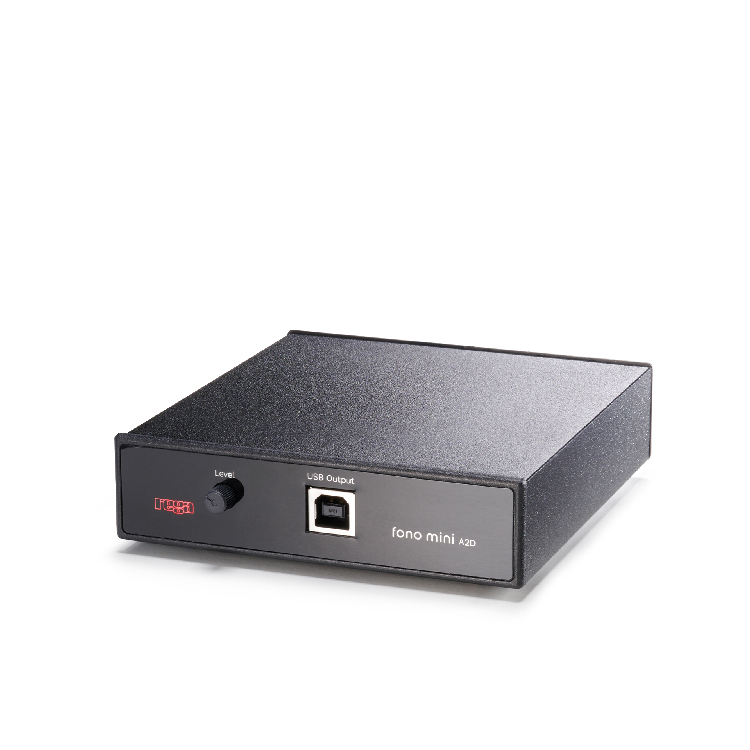
The best-sounding option if you’re shopping on a tight budget.
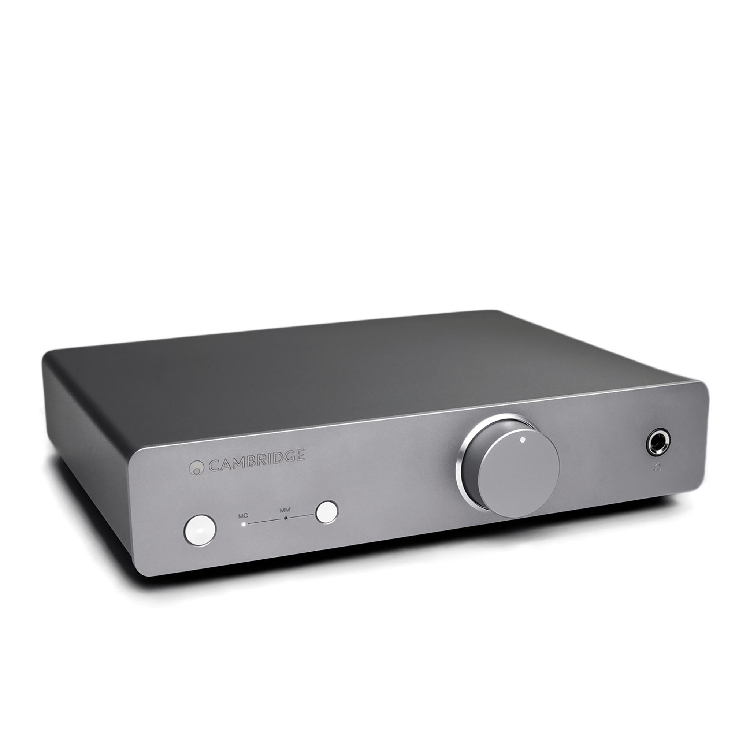
With a built-in amp for your cans, this is a two-for-one treat.
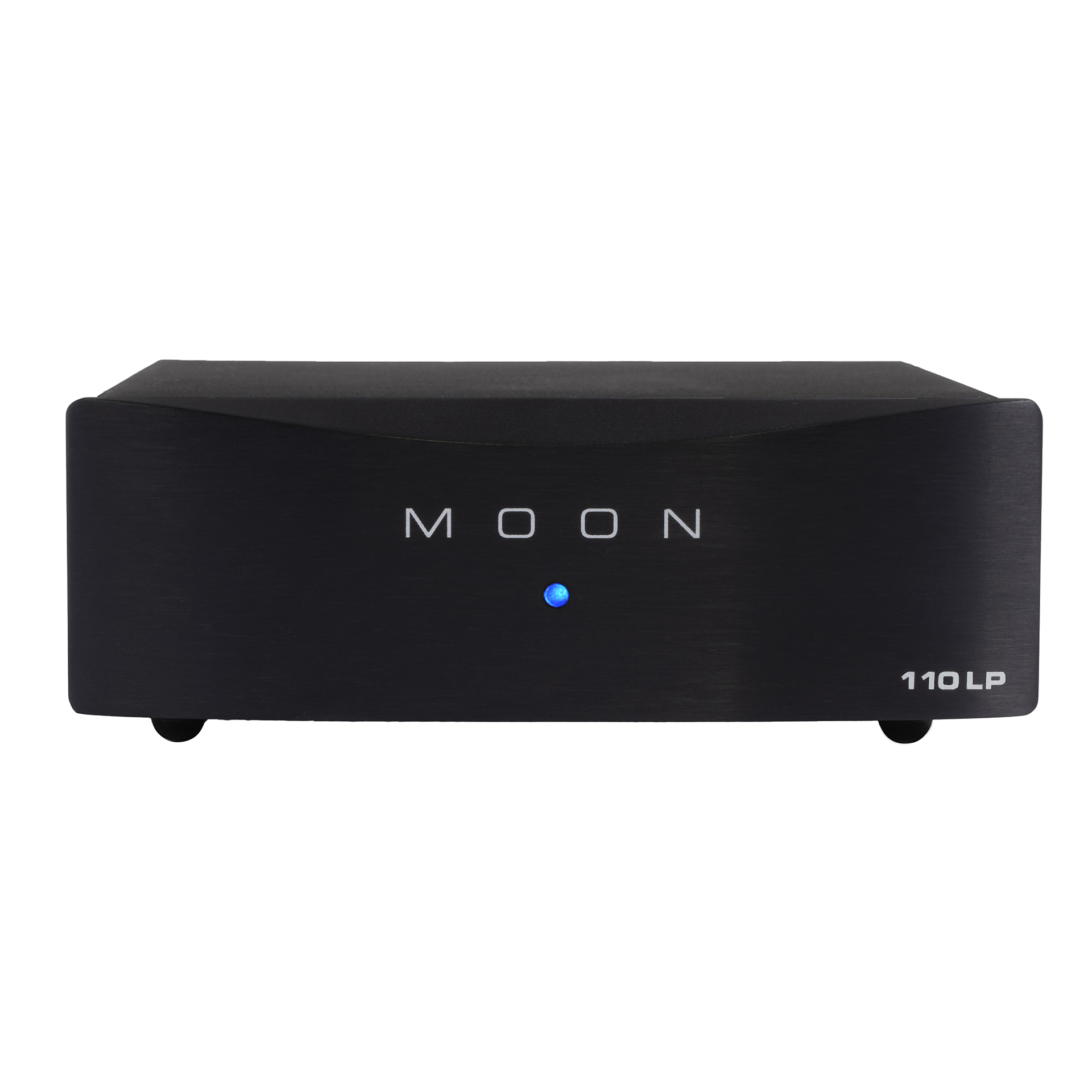
Hugely capable without breaking the bank, the 110LP v2 is well worth auditioning.
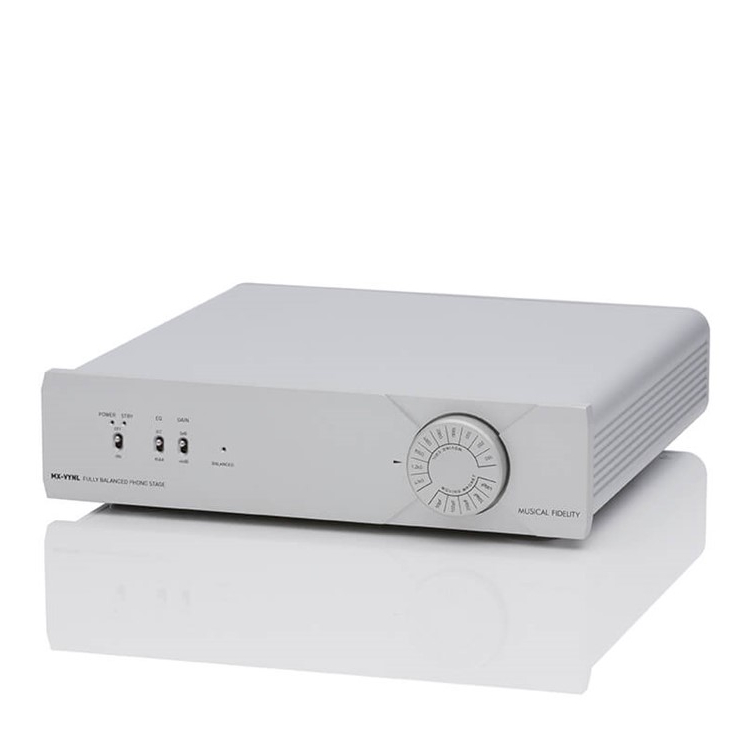
Detailed, refined and articulate, the MX-VYNL pairs perfectly with a suitable system.
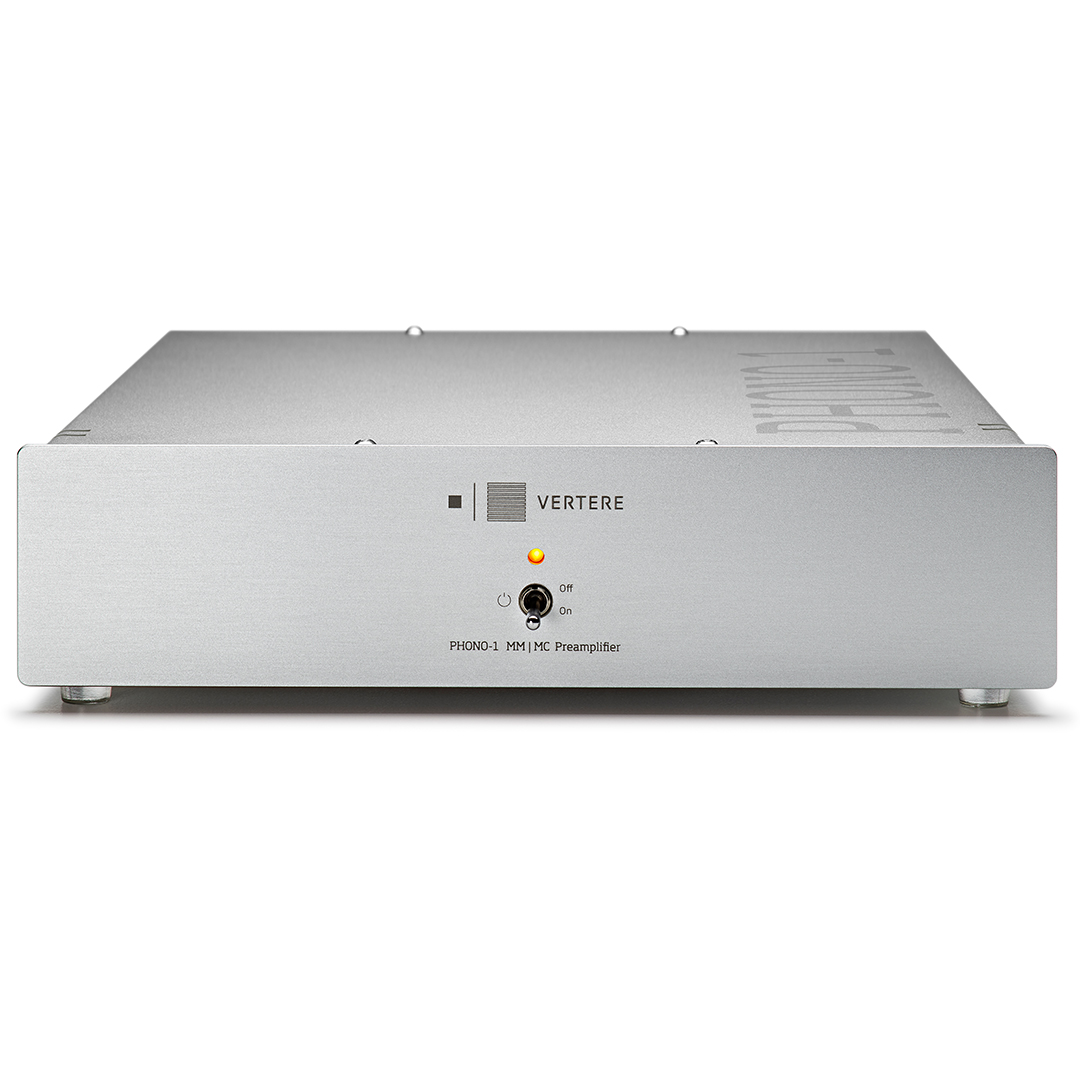
With a similarly talented source and system Vertere’s premium phono stage really shines.

I have been testing hi-fi separates such as turntables, amplifiers and phono stages for over a decade in my time at What Hi-Fi?, and as a turntable user myself, I know the importance a good phono stage can make to your vinyl system's performance. Which phono stage is best for you will depend on the cartridge and turntable you already have, while the price, type and extra features of a phono preamp should cater to your specific vinyl set-up's needs and talents. Above all, it should deliver the best sound quality from your record collection – and all our top picks here do just that.
28th July 2025: No new entries to add this time, but we have just received the new Cyrus 40 PPA and Lindemann Limetree Phono II in for testing – we gave previous generations of both these products five stars, so we have high hopes. Stay tuned for our reviews in due course.
The best phono preamp overall
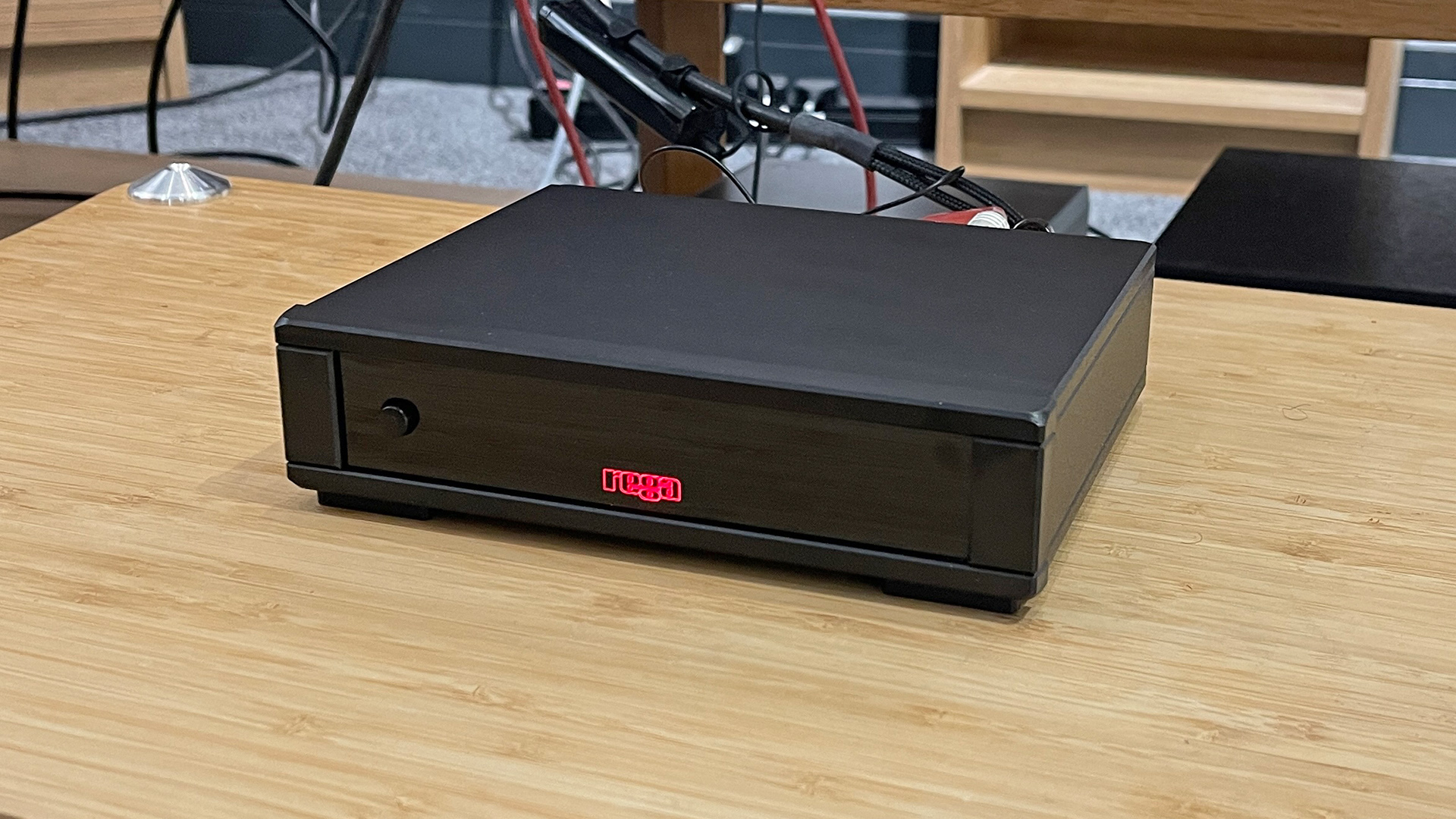
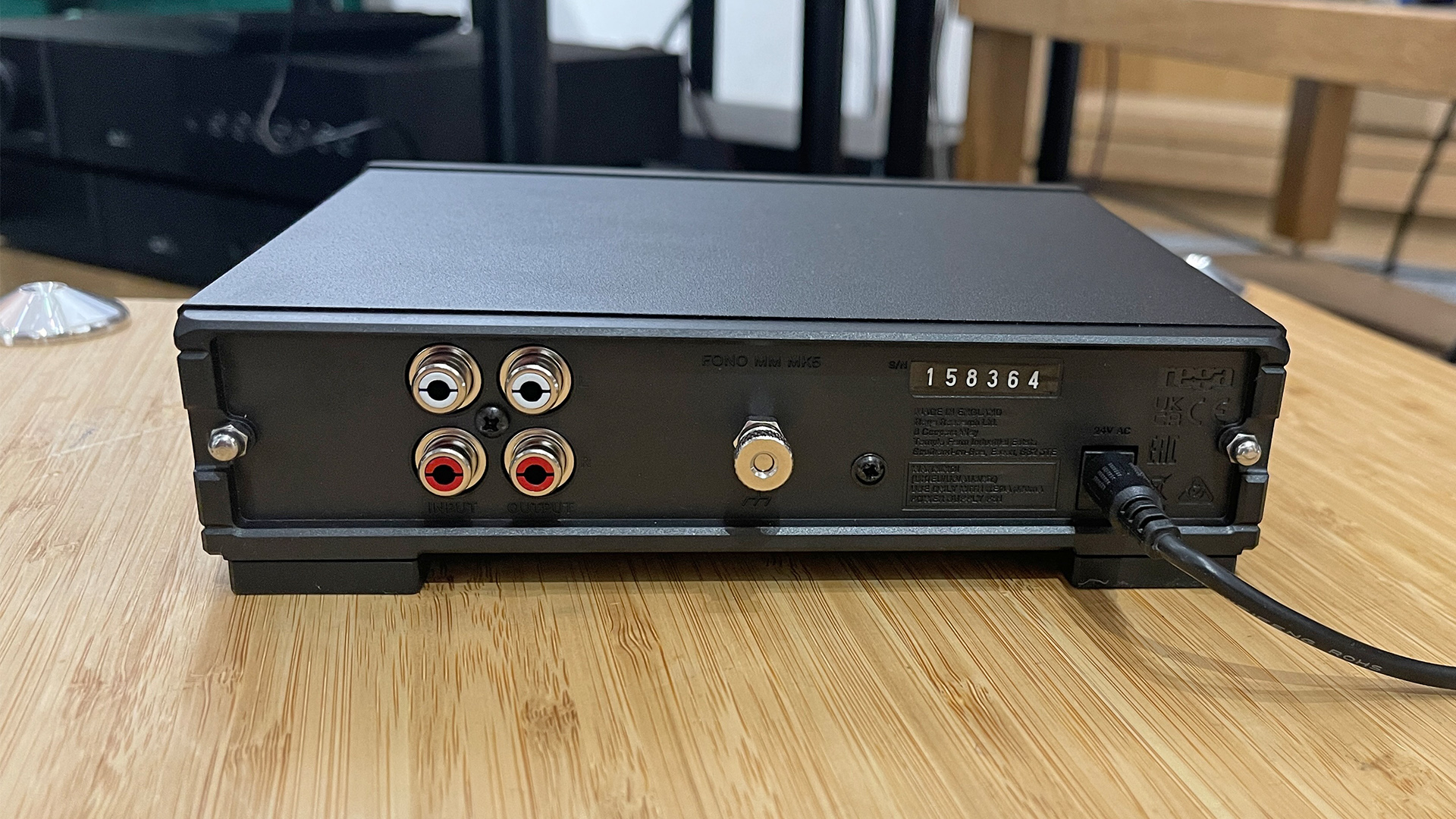
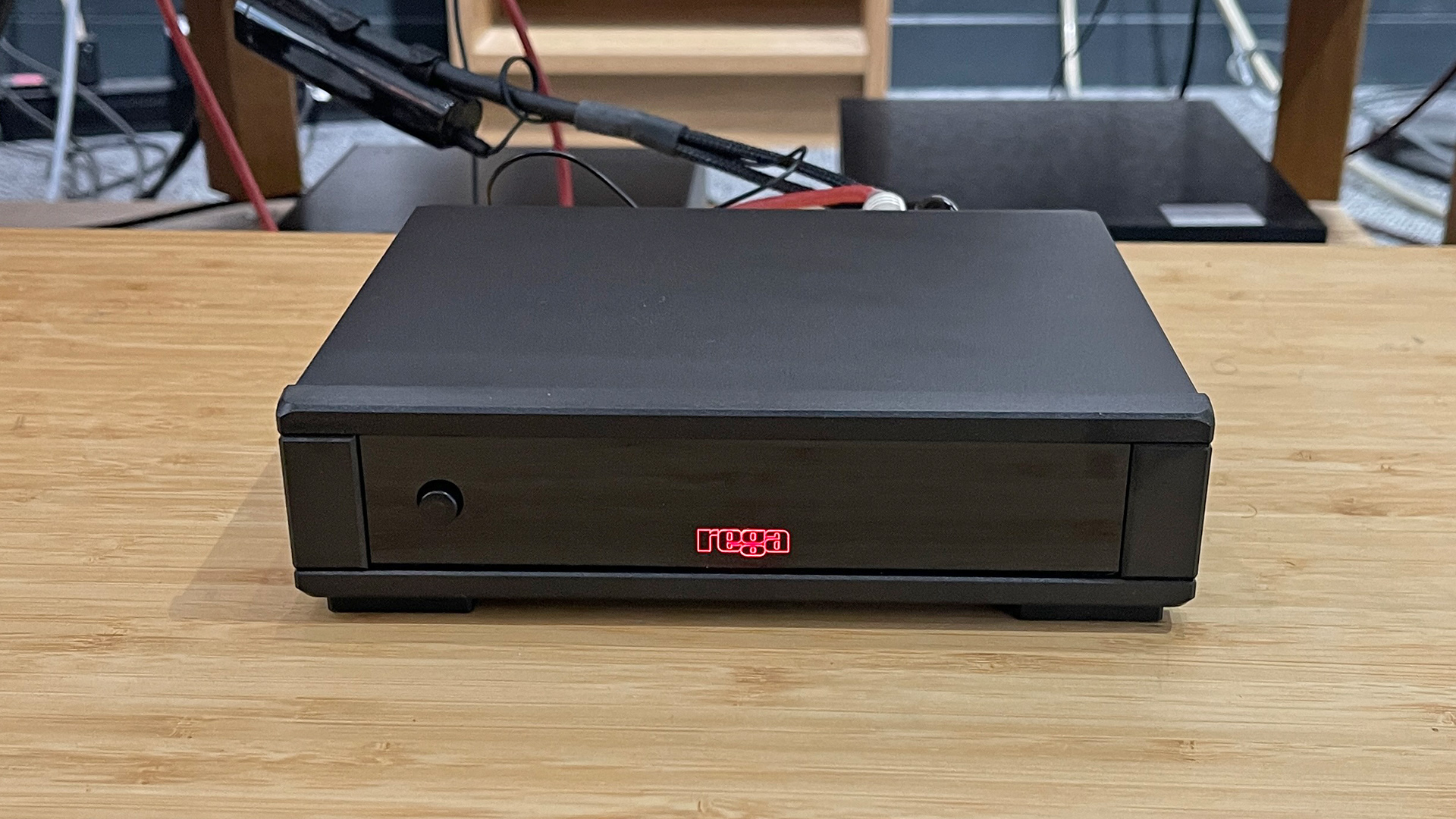
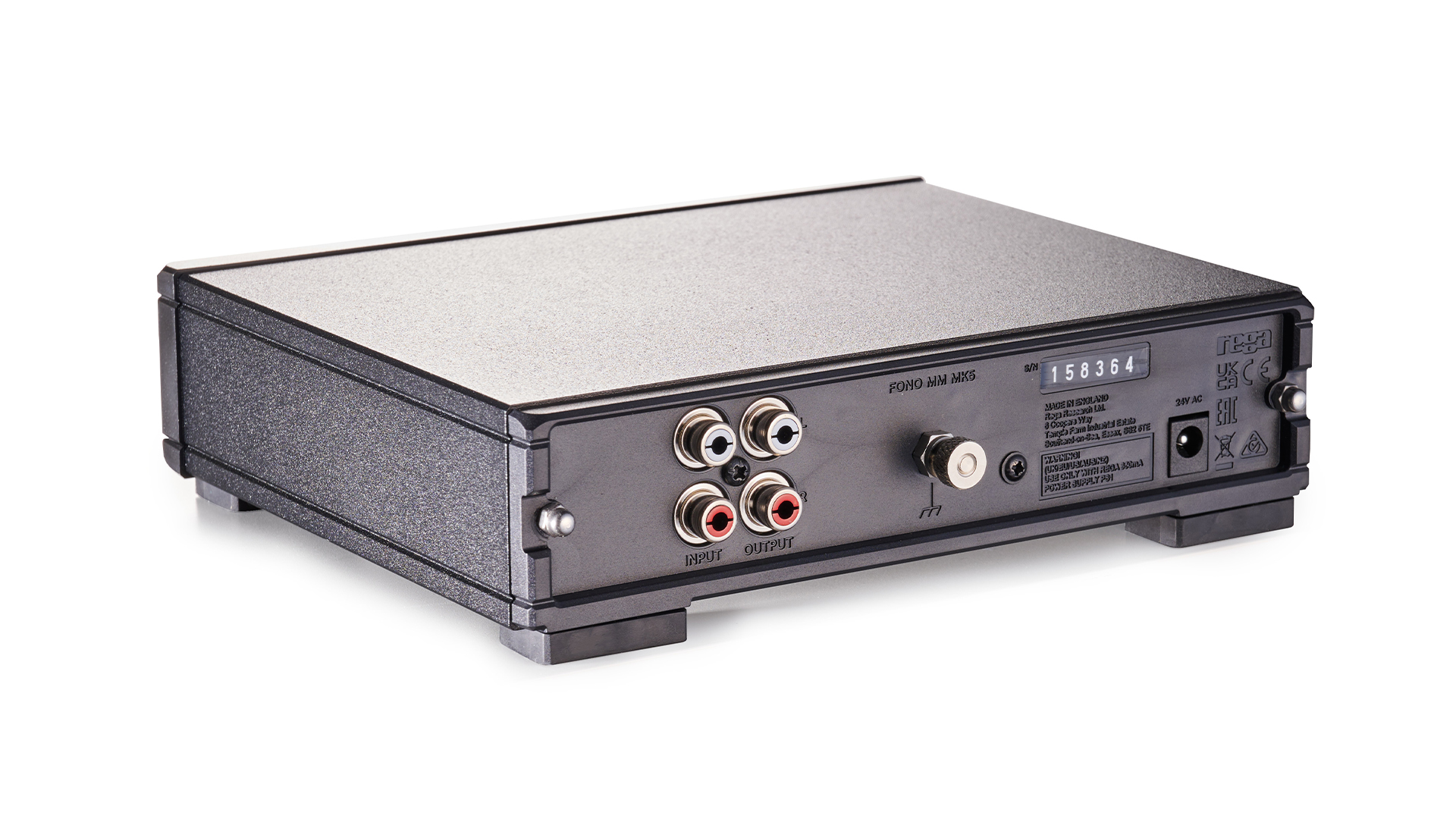
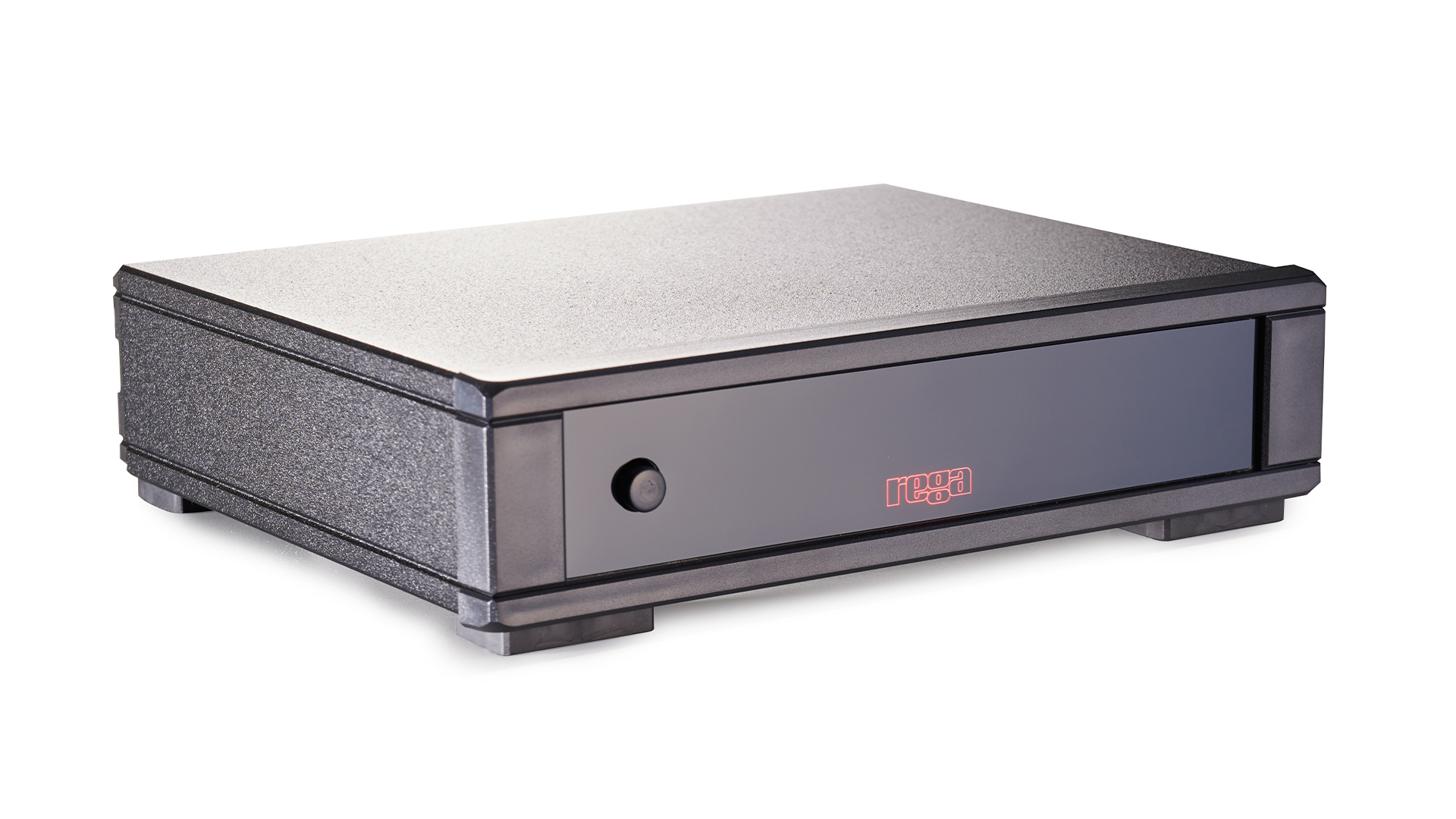
Specifications
Reasons to buy
Reasons to avoid
We've continuously been impressed with Rega's excellent (and rather affordable) Fono MM range, so it was something of a relief that the latest model, which featured a brand-spanking new look, didn't sacrifice style for sound.
That same Rega DNA is still in there throughout the latest Fono MM Mk5 phono stage.
No, the changes aren't massive from the previous models, but what remains is the Fono MM's ability to knit music together confidentially and cohesively. When testing the phono preamp out with the Rega Planar 3/Elys and newer Planar 3 RS Edition turntable (it's a moving magnet-only model), we were once again struck by the unit's fast, punchy sound that gives your favourite tracks a real sense of weight and gusto.
Detail levels are great, too, uncovering new layers of musicality and subtle texture as it goes, especially with regard to vocals. From Beethoven to Bruce Springsteen, the Rega Fono MM is completely at home, and is "full of enthusiasm when it comes to thumping out the music’s dramatic dynamic shifts."
It's a significant step above the more budget Fono Mini A2D Mk2 (below), bringing greater power and detail retrieval. It's a terrific unit on its own and as an upgrade for your vinyl system.
Rega didn't exactly reinvent the wheel with the Mk5 model, but that's not necessarily a bad thing. That new case is certainly attractive enough, while that same agile, punchy performance gives you just the sound you're looking for if you like your music to have a bit of bite.
Read the full Rega Fono MM Mk5 review
The best budget phono preamp

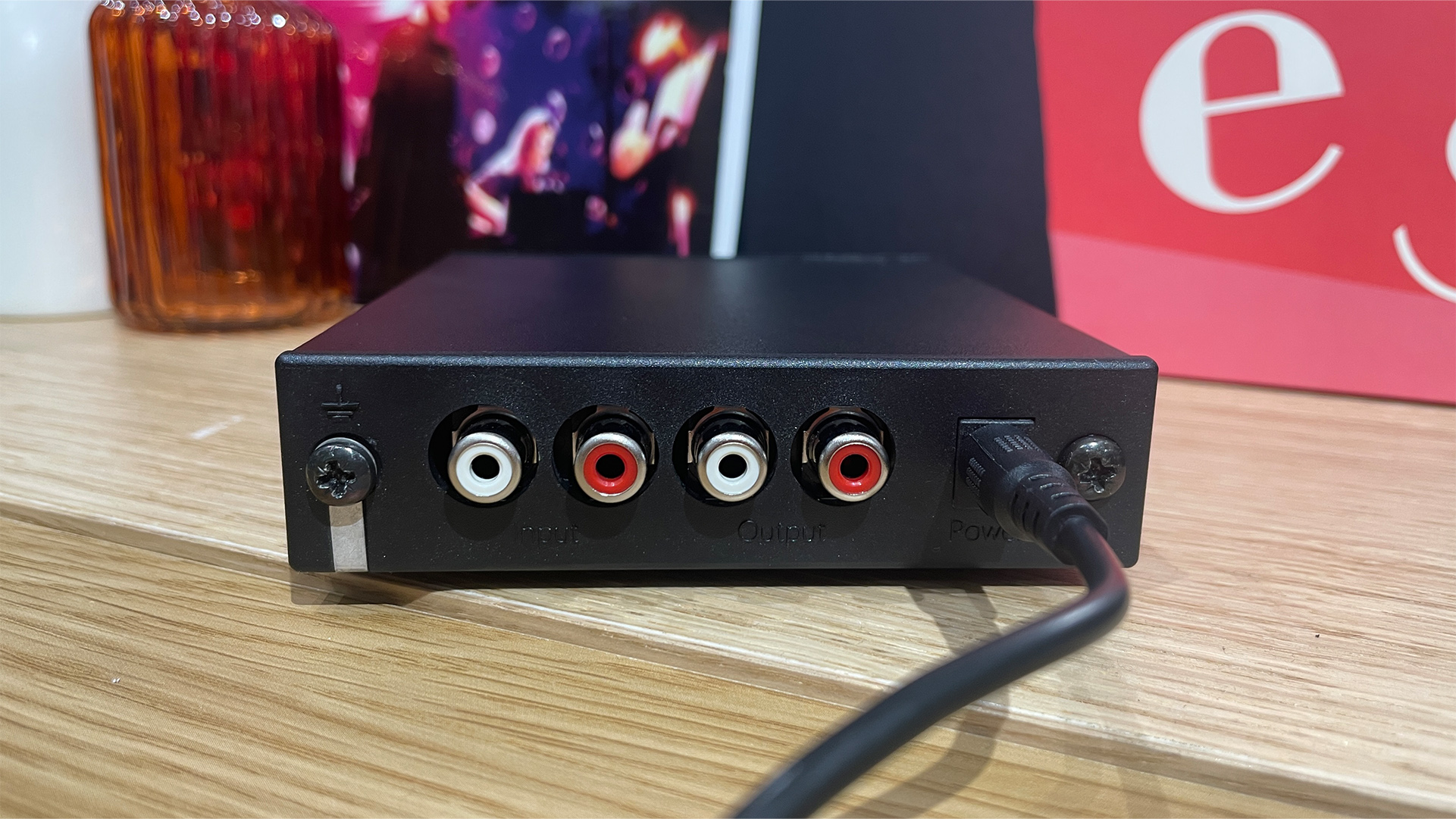
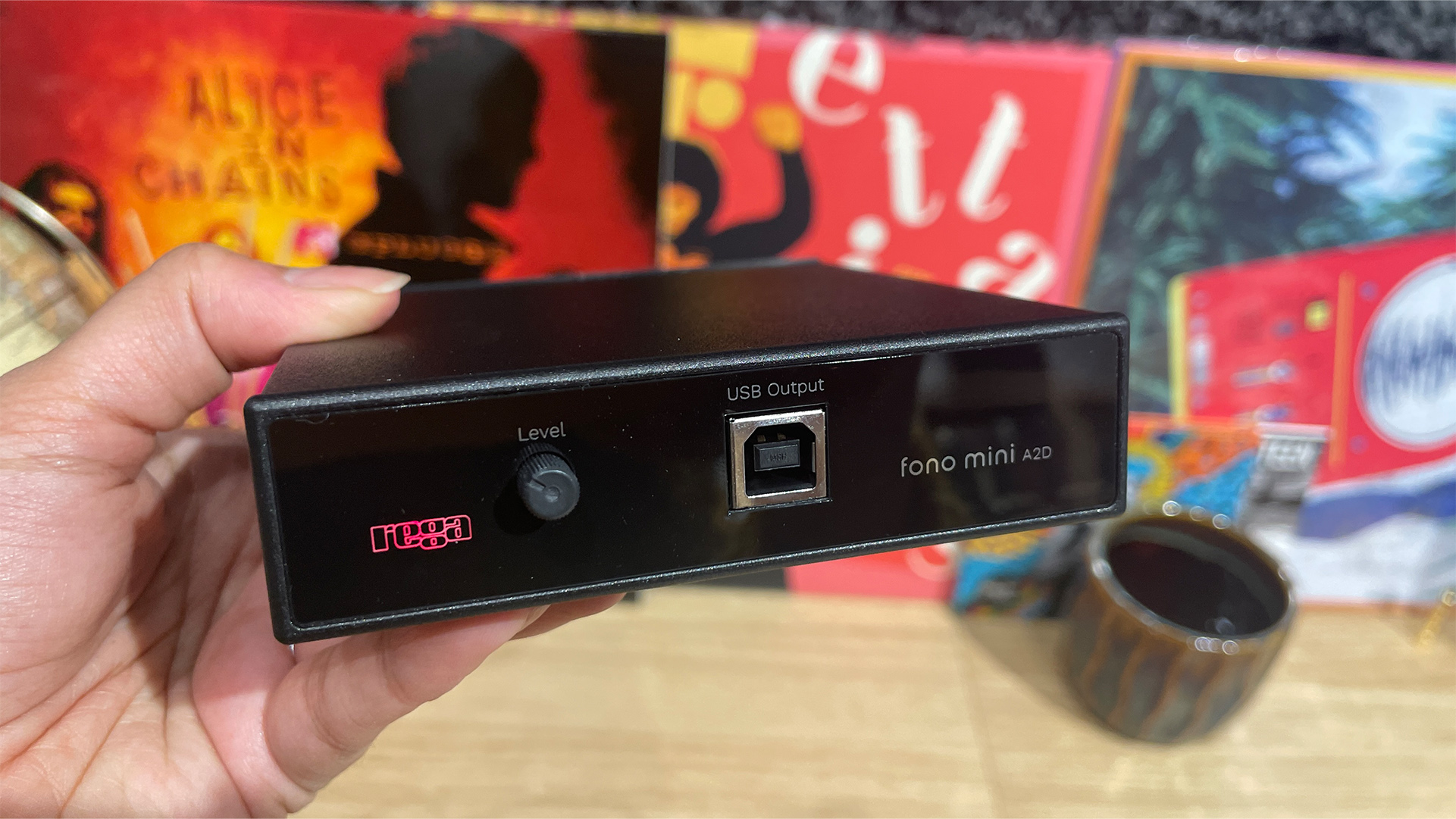
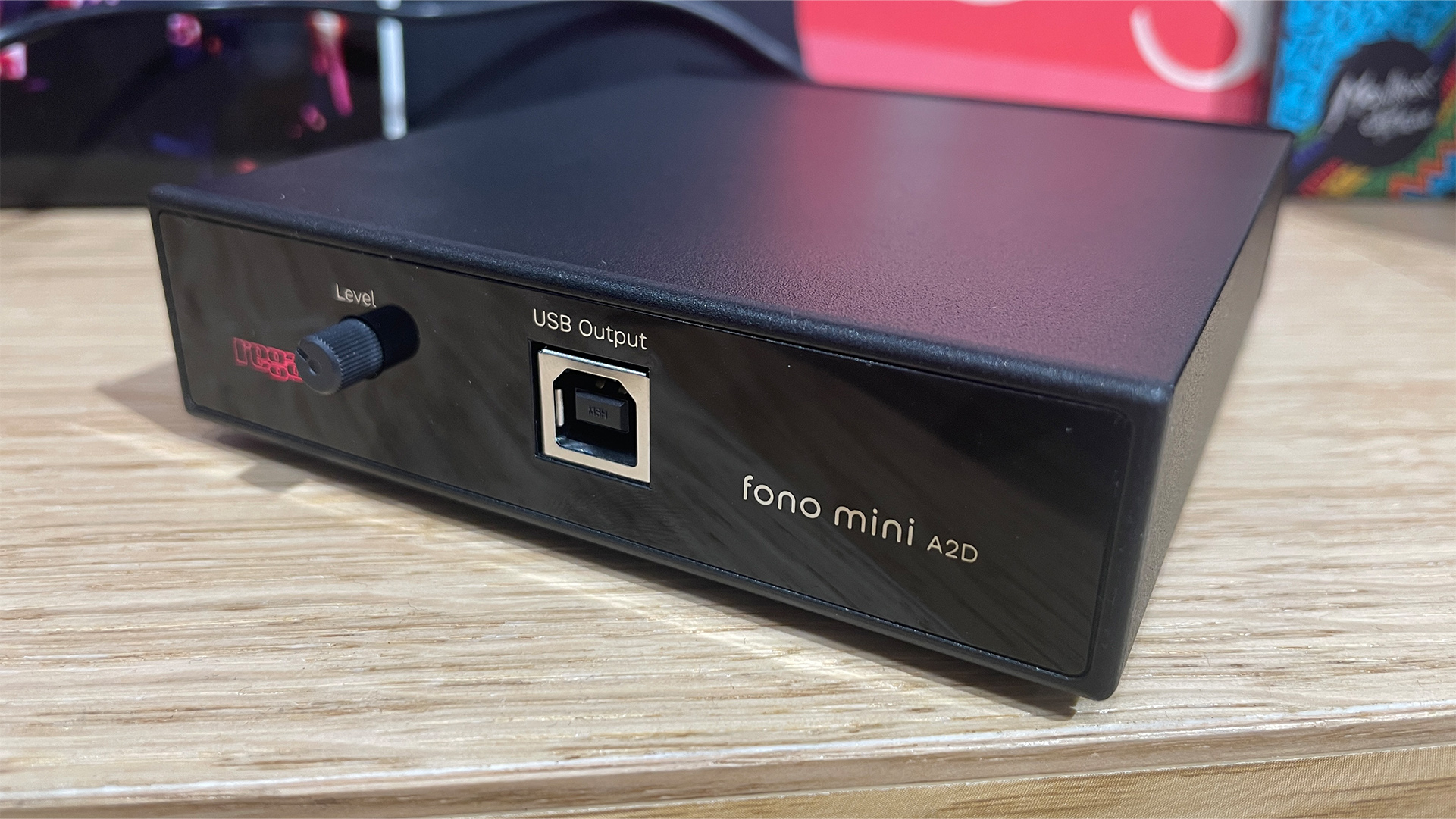
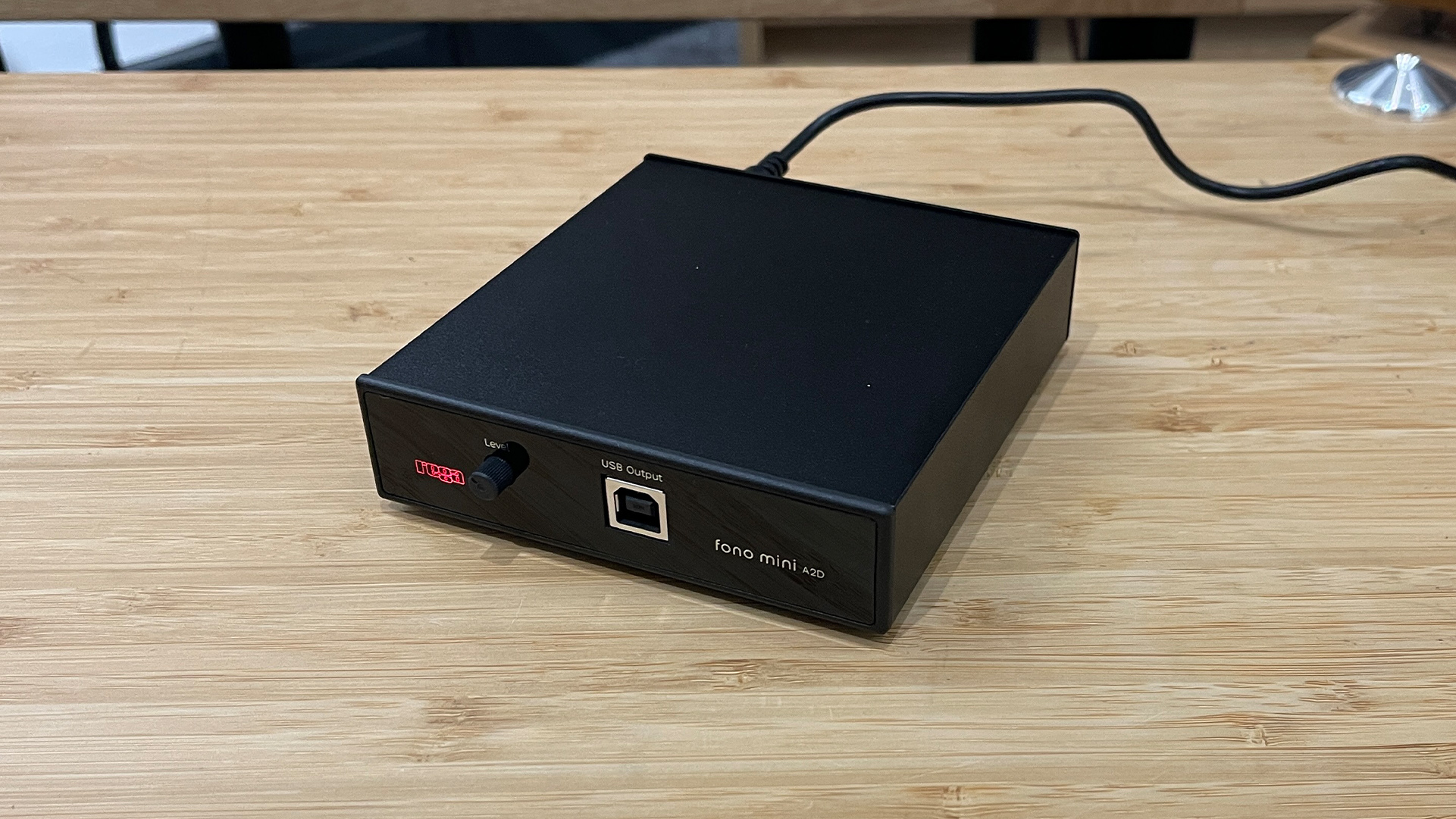
Reasons to buy
Reasons to avoid
If you're looking for the best budget phono stage currently on the market, Rega's Fono Mini A2D is a top contender. This tiny, plain box was never much of a looker, and the Mk2 version is no different, with only a new glossy front panel and a neater appearance simply bringing it up to date with Rega's current amplifier range.
The most important part of this phono stage, the audio circuitry, remains unchanged from the original model we gave five stars to. It features stereo RCA for input and output connections, and a USB (Type B) output with an accompanying level control, for recording your vinyl records to your laptop as a digital file.
It's unusual to see this option on a phono stage, let alone at this budget level, but it's a fairly easy process to digitise vinyl provided you have the time and good recording software. We use Audacity and have no problems recording numerous tracks from vinyl to our MacBook Pro. The quality of the recordings mirrors that of the Fono Mini A2D's performance, and that’s a positive thing.
Sonically, it's as frill-free as it looks but gets the basics right. It's a lively presentation, full of convincing and nuanced dynamic contrasts, with power and passion behind vocals. While it's not the most refined or spacious sound, there's ample detail and insight to hold our interest.
We use both a Sumiko Rainier MM and Vertere’s Sabre MM cartridges during our testing and the Fono Mini A2D sounds balanced with both. It has Rega's surefooted sense of rhythm and punch, plenty of low-end articulation and its overall composure when the music gets demanding is admirable.
What we find most impressive is the musically cohesive way that Rega organises and delivers all this information – for this price, there's no better alternative. We imagine this phono stage to be an ideal go-between, say, a KEF LSX II LT speaker system and a turntable, or if you wanted to upgrade your existing vinyl system.
A talented little device that delivers excellent performance for the money.
Read the full Rega Fono Mini A2D Mk2 review
The best phono preamp with headphone jack
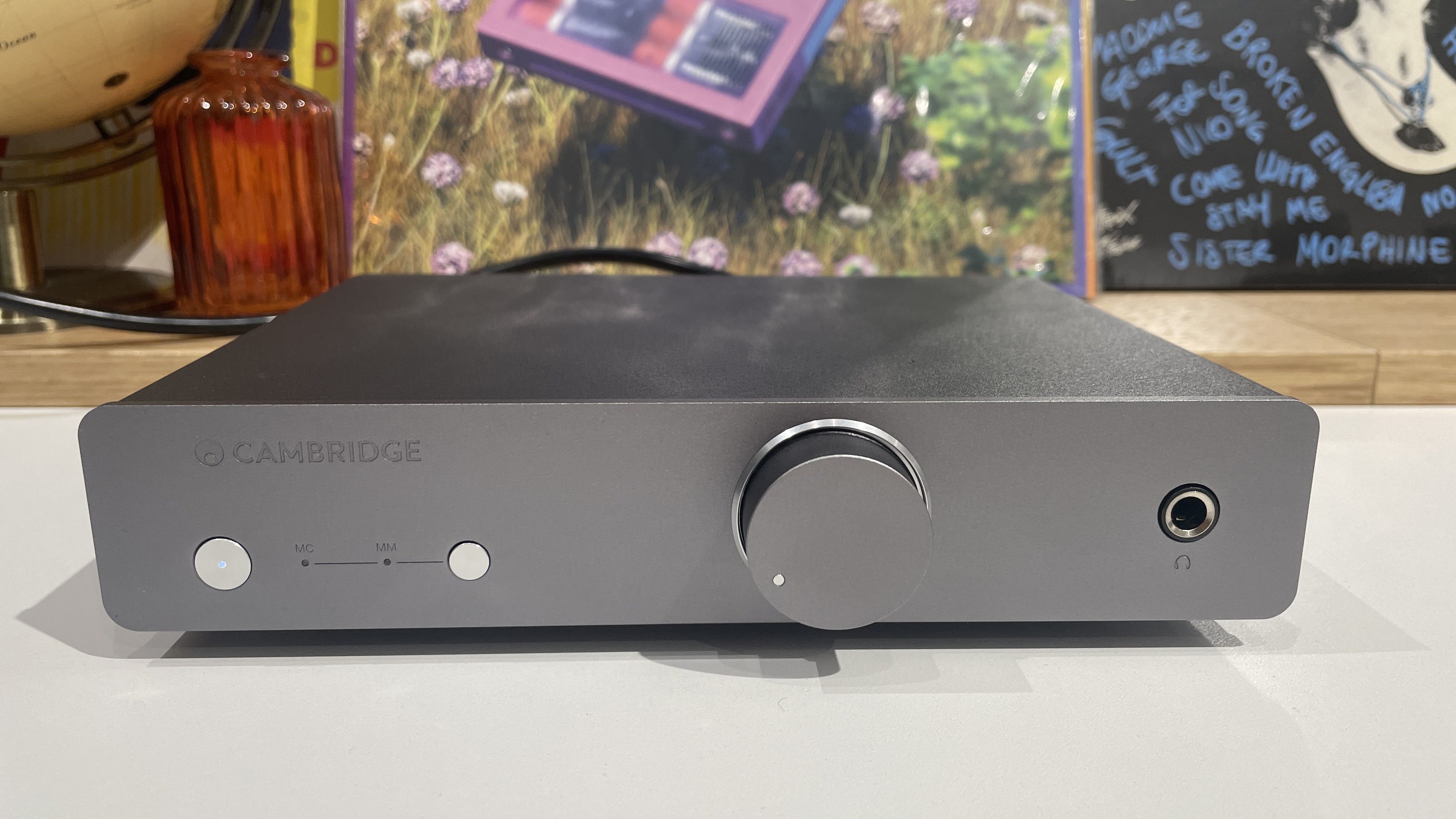
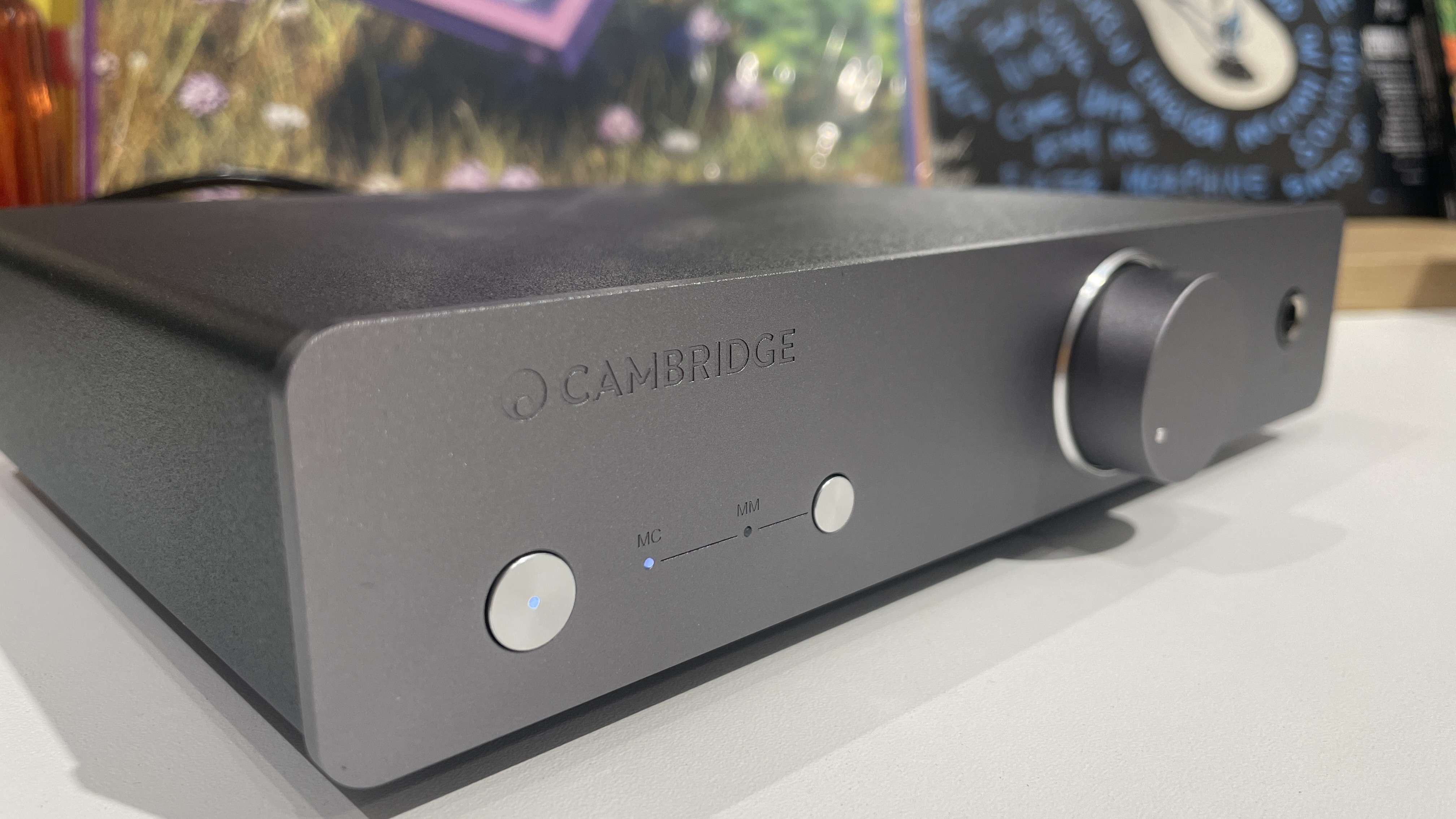
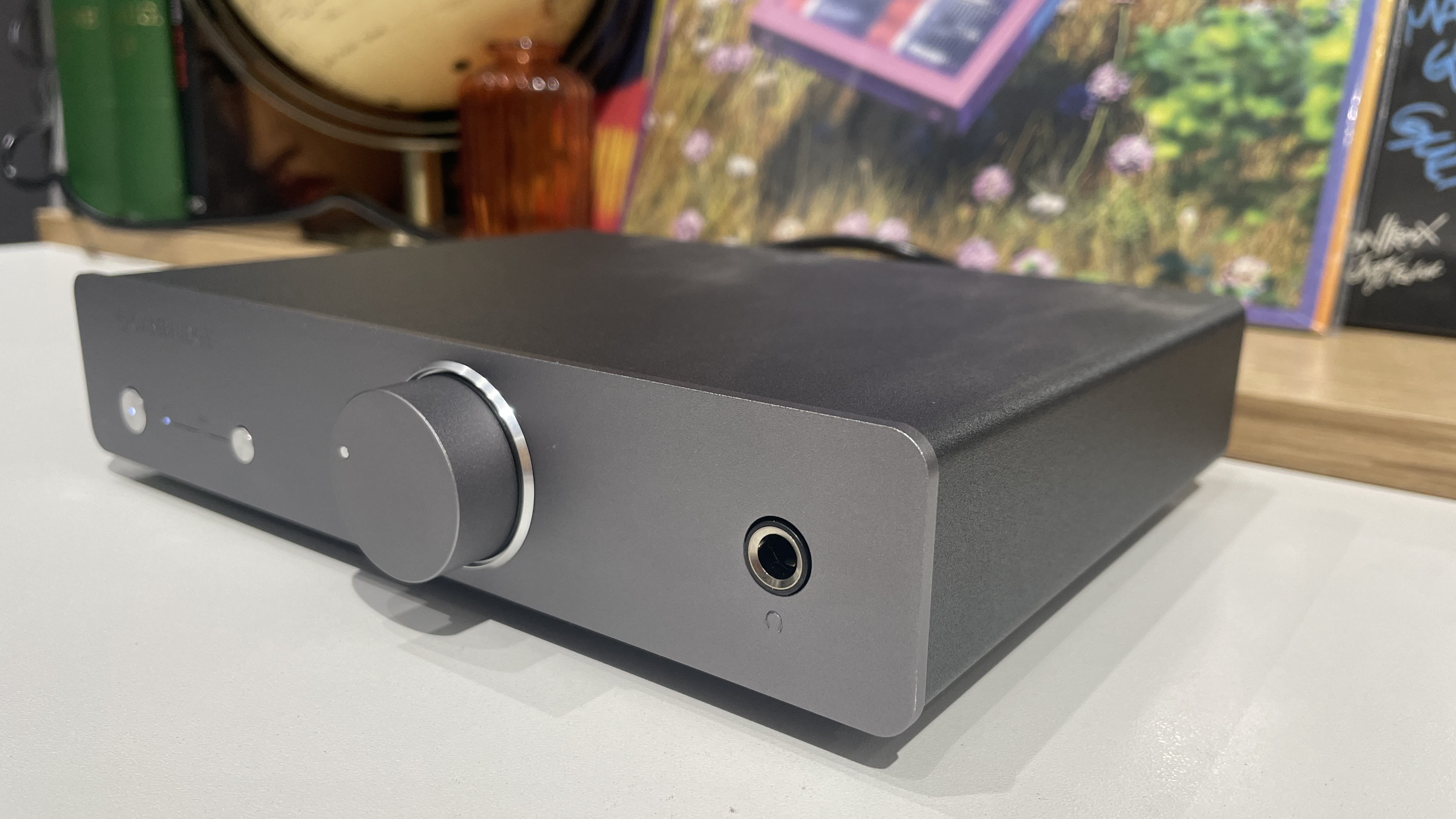
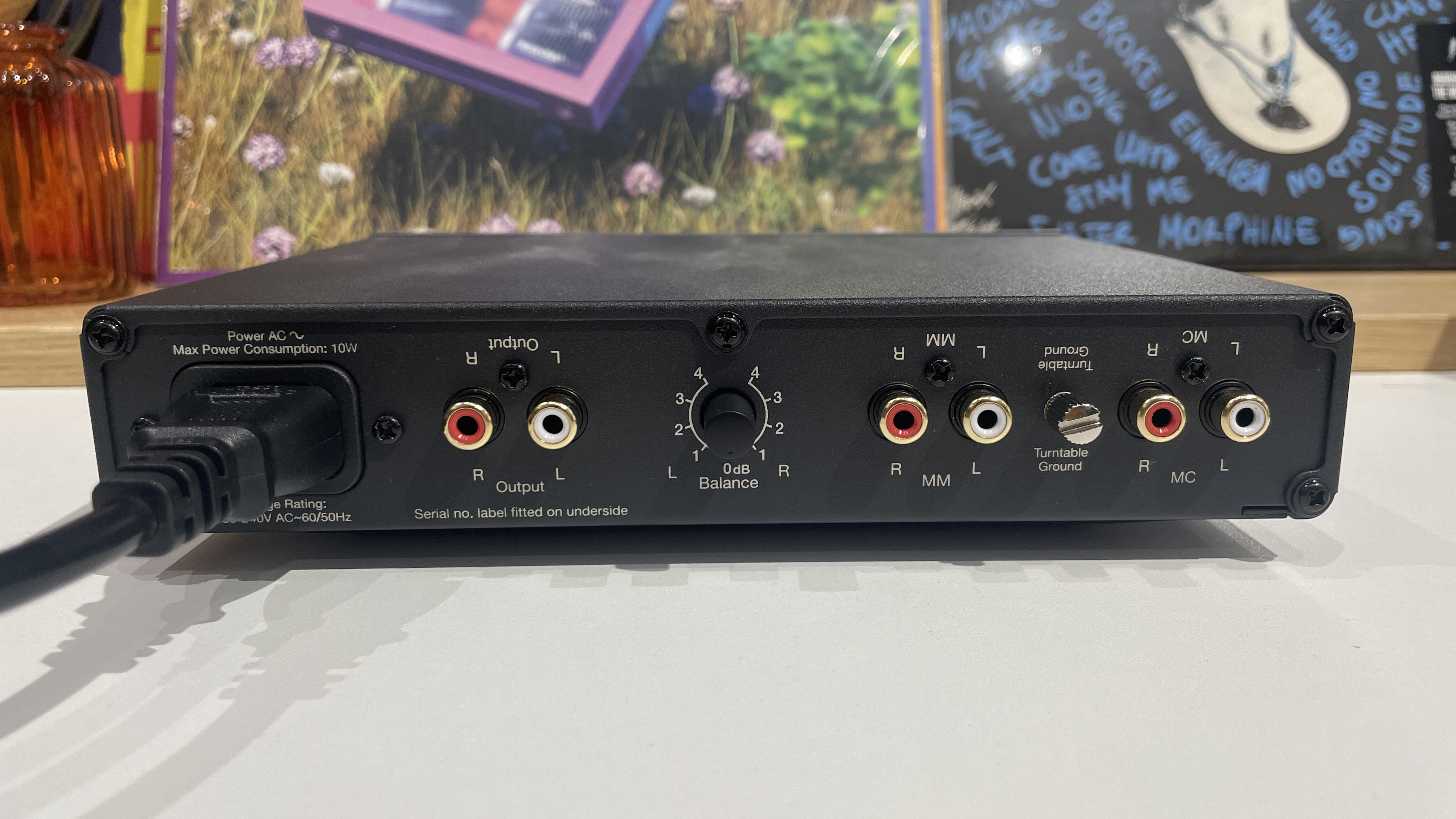
Specifications
Reasons to buy
Reasons to avoid
With an offset volume dial, minimalist styling and mirrored rear labelling that's easy to read even if you're peering over the top of the unit, it's clear a lot of thought has gone into the Cambridge Audio Duo phono stage. And no less attention has been paid to the audio quality.
The presentation is very good indeed, sounding engaging, cohesive and dynamic, with a good deal of detail and agile timing. It doesn't quite match Rega's Fono MM for outright punch and rhythmic precision, and you'll find clearer detail and a bigger scale from the iFi Zen Phono 3, but it certainly holds its own verve with both MC and MM cartridges.
The bonus here is the inclusion of a built-in headphone amplifier with 6.3mm headphone jack, which is somewhat unusual but entirely welcome in a phono stage at this level.
It's a lovely way to upgrade your vinyl system or add a bit of modern flourish, meaning you can listen to music in peace or at night.
The smooth, full-bodied performance, coupled with the inclusion of a headphone amp, makes this stylish box certainly worthy of consideration. If you want a simpler, MM-only phono preamp with no headphone socket, then the cheaper Cambridge Audio Alva Solo is an option.
But we think the Duo is a more versatile and long-lasting model that will work with a variety of affordable to mid-priced turntables and headphones.
Read the full Cambridge Audio Duo MC/MM review
The best mid-price phono preamp
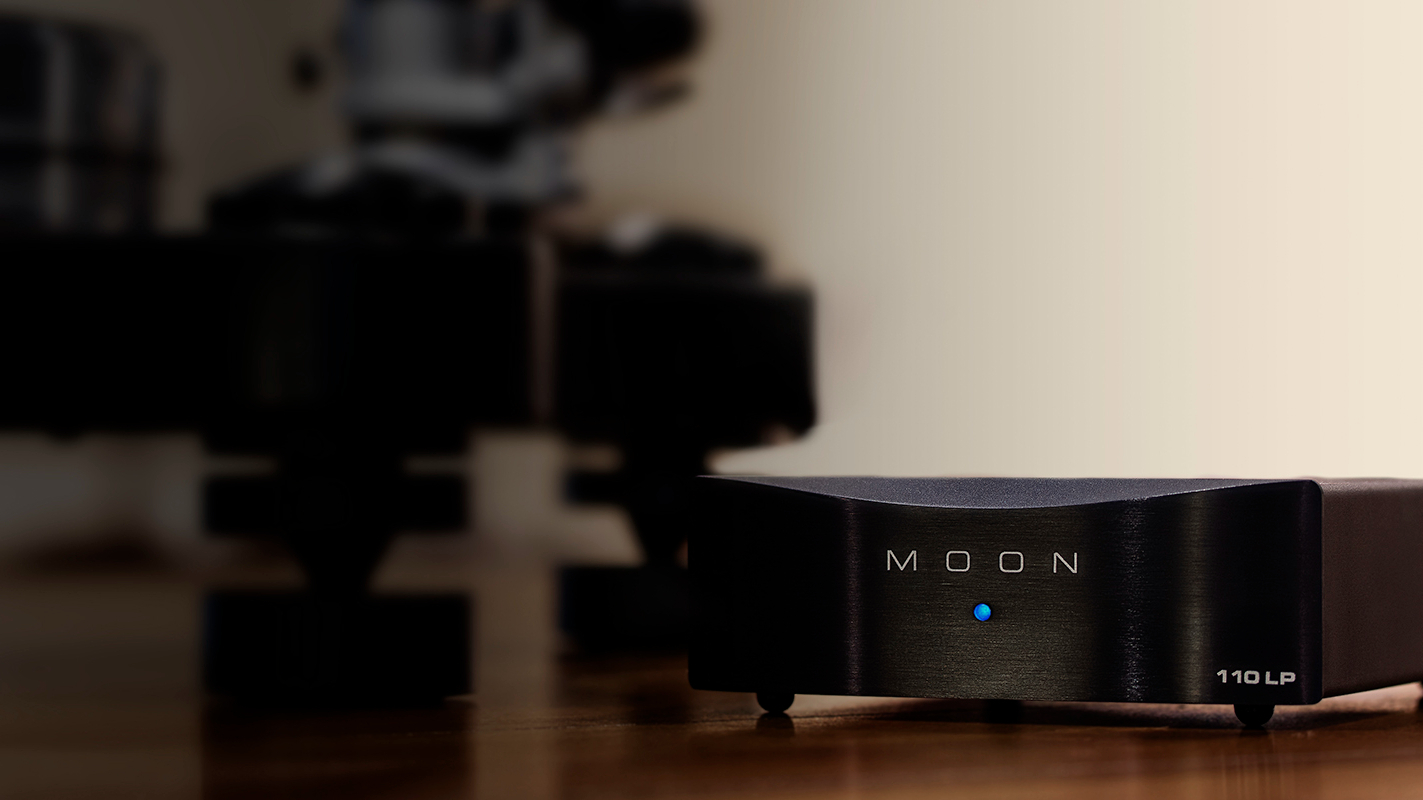

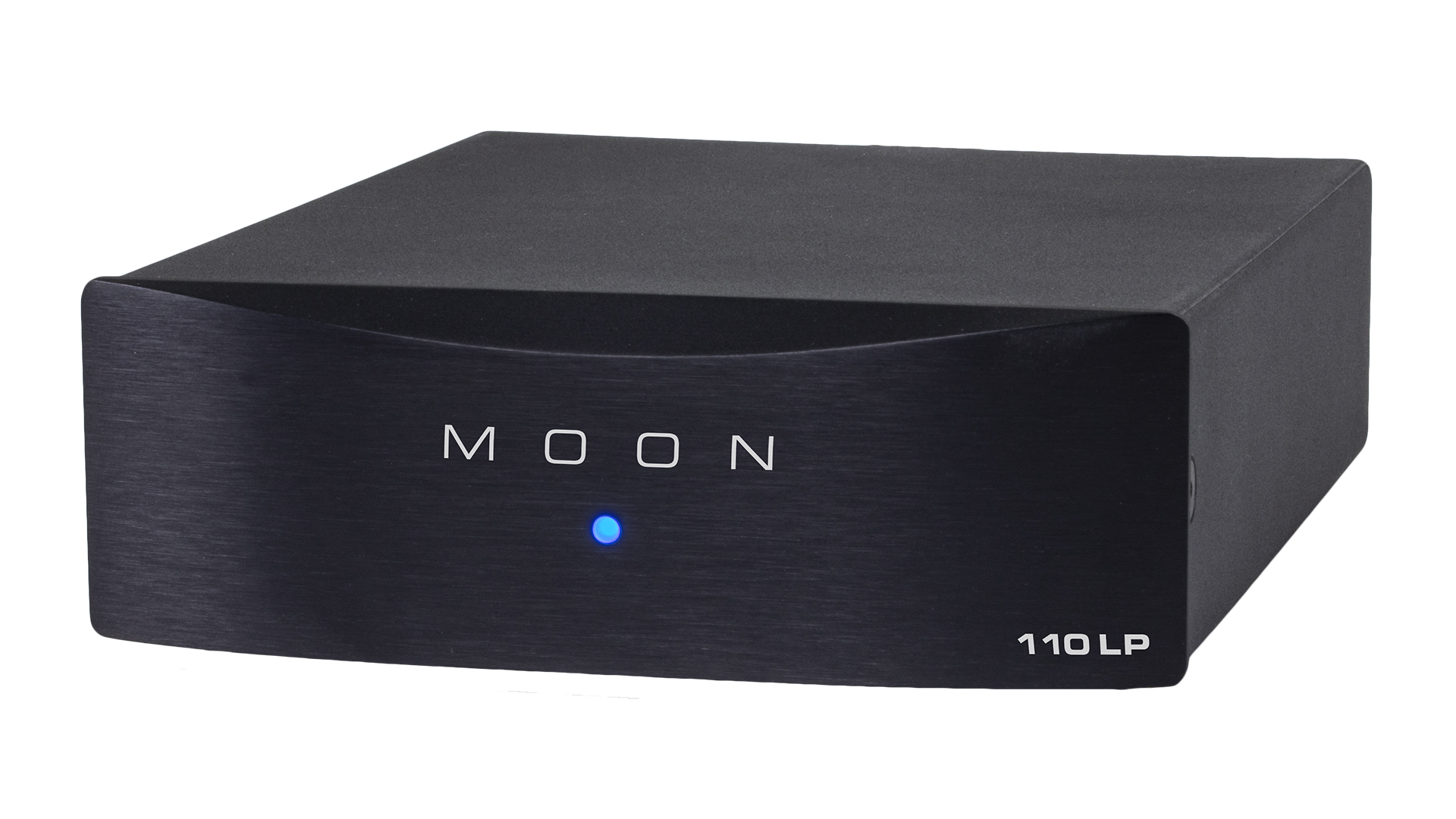
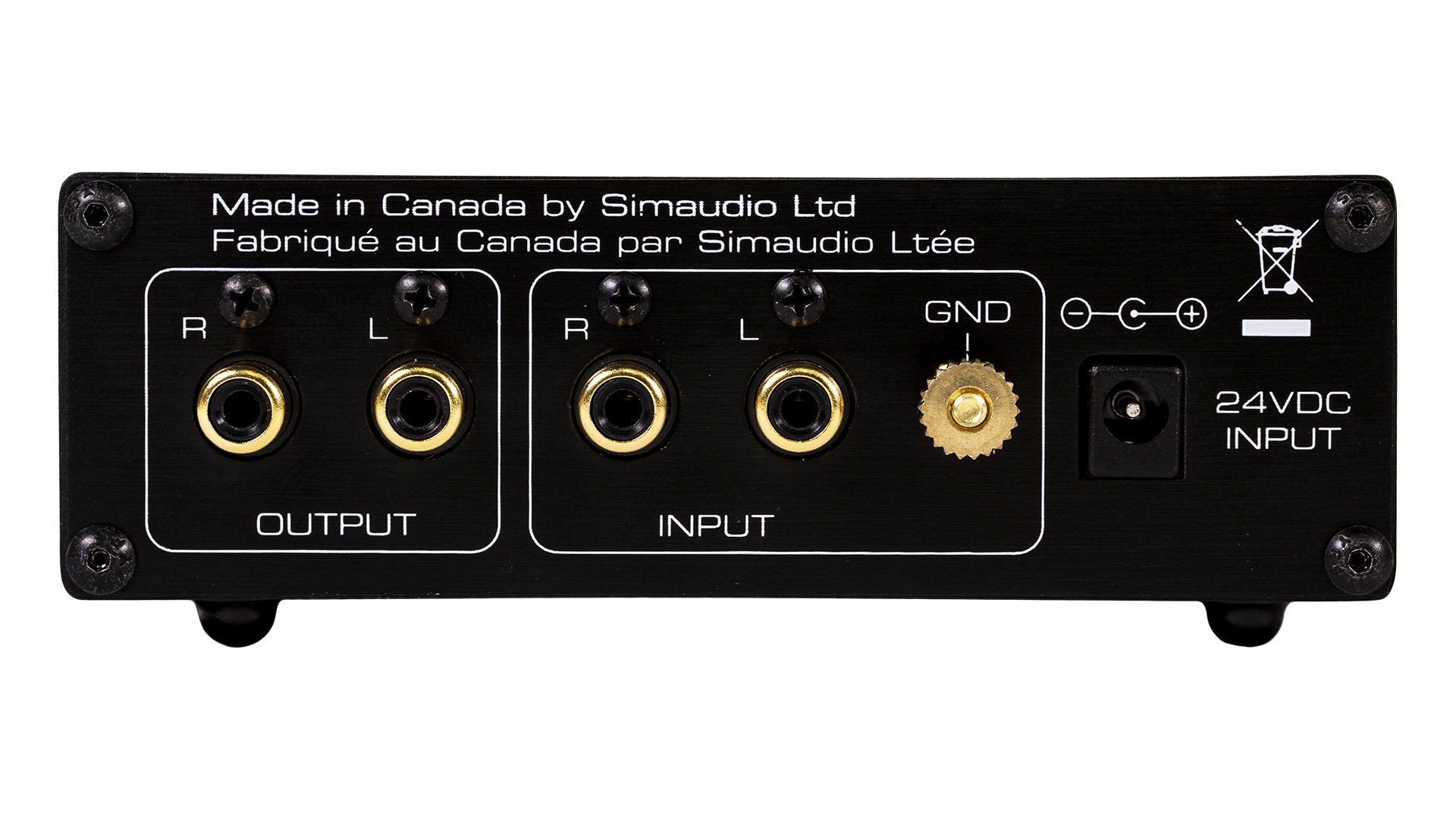
Specifications
Reasons to buy
Reasons to avoid
It doesn't have the snappiest of names, but the Moon 110LP v2 does a fine job of improving your vinyl performance. The neat aluminium box is finished to Moon's high standards and is switchable, meaning it's capable of handling both moving coil and moving magnet cartridges.
Provided you keep it away from other mains-powered products and power cables, this phono stage will prove suitably quiet and hum-free. Features are basic but it's clear that Moon has focused on the bit that counts – sound quality.
As such, the Moon 110LP v2 is one of the best phono preamps of its kind at this price. It works particularly well with moving magnet cartridges, dishing up a smooth, fluid and refined sound with a satisfying punch.
We like how stereo imaging remains stable even with demanding music – it's an accomplished performance. It has a subtle way with music that's rewarding and easy to listen to for long hours.
With moving coil cartridges, large-scale dynamics are a touch restrained and bass is softer – but you’d have to spend half as much again to get a phono stage that does appreciably better.
If you’re in the market for a quality affordable phono stage, this little Award-winning box is well worth auditioning.
Read the full Moon 110LP v2 review
The best audiophile phono preamp
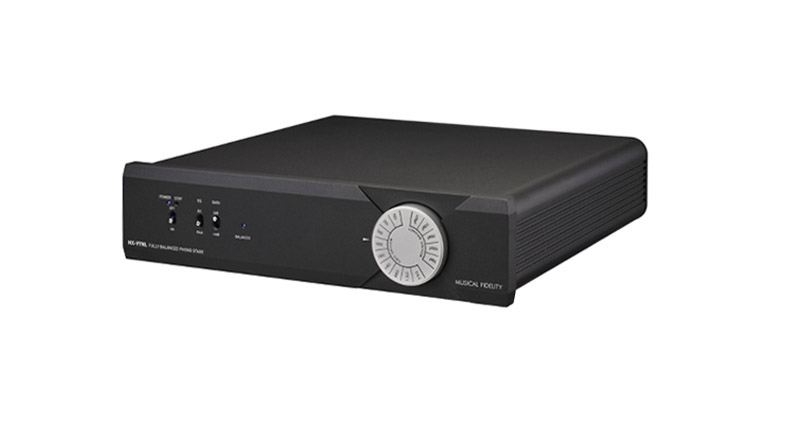
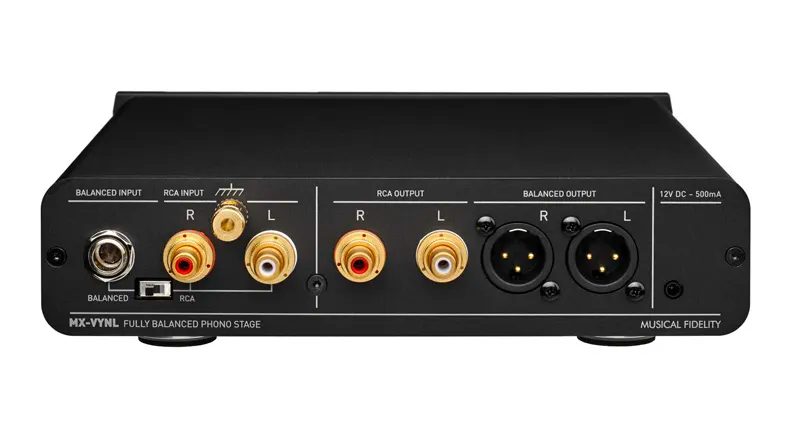
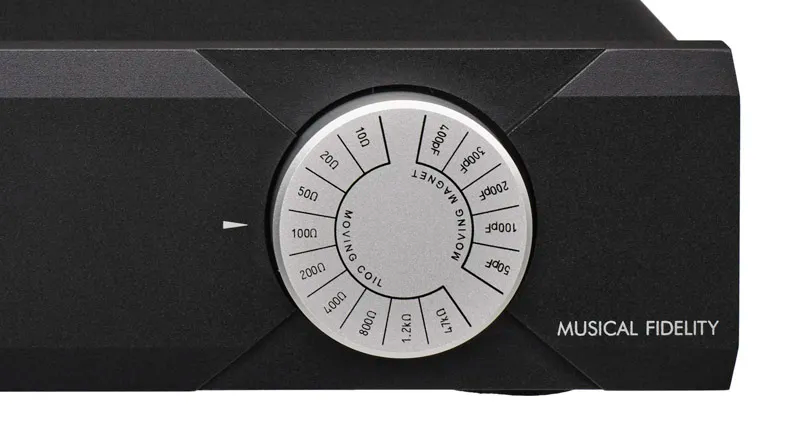
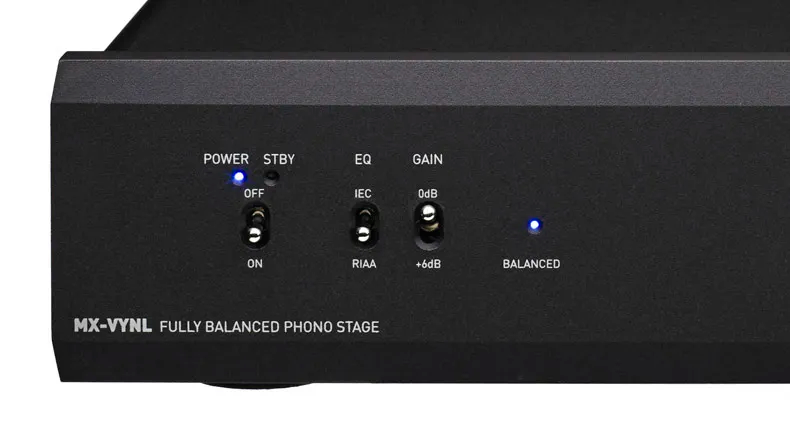

Specifications
Reasons to buy
Reasons to avoid
Phono stages tend to be, apart from the sleek Cambridge Audio Duo above, rather plain black boxes that are meant to be hidden away. Musical Fidelity takes a different approach: this phono preamp is beautifully made, with a smartly machined front panel and nice-to-use controls.
Rather than use a series of dipswitches (as many rivals do), the MX-VYNL has a rather elegant control dial to manage the switch between moving coil and moving magnet inputs and their different loading requirements.
Alongside a standard single-ended phono input – something that will be used by the vast majority of decks around – it can also accept a balanced signal in the form of a mini XLR 5-pin connector.
Thankfully, convenience is far from the MX-VYNL's only strength - sound is wonderfully transparent and detailed, digging up low-level instrumental strands and sonic textures with ease.
We love the way it handles vocals. There's a fluidity to it that makes rivals seem mechanical by comparison, although it may not have the outright rhythmic cohesion found in the similarly-priced Rega Aria. But it doesn't exactly hold back when it comes to bite and attack.
It's a superb balance of attitude and refinement. If the rest of your system is up to scratch, the MX-VYNL is worth the investment.
Read the full Musical Fidelity MX-VYNL review
The best high-end phono preamp
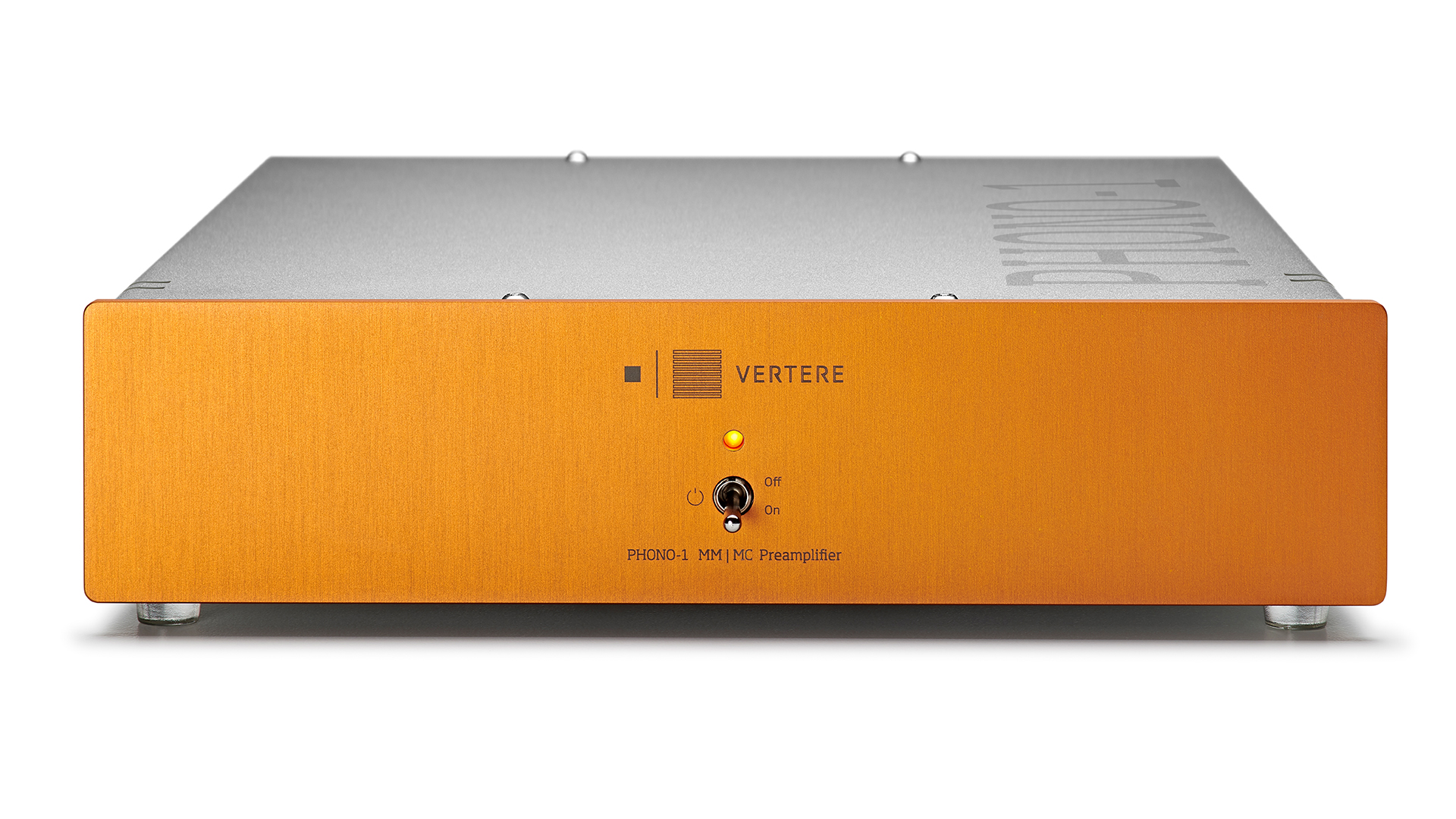
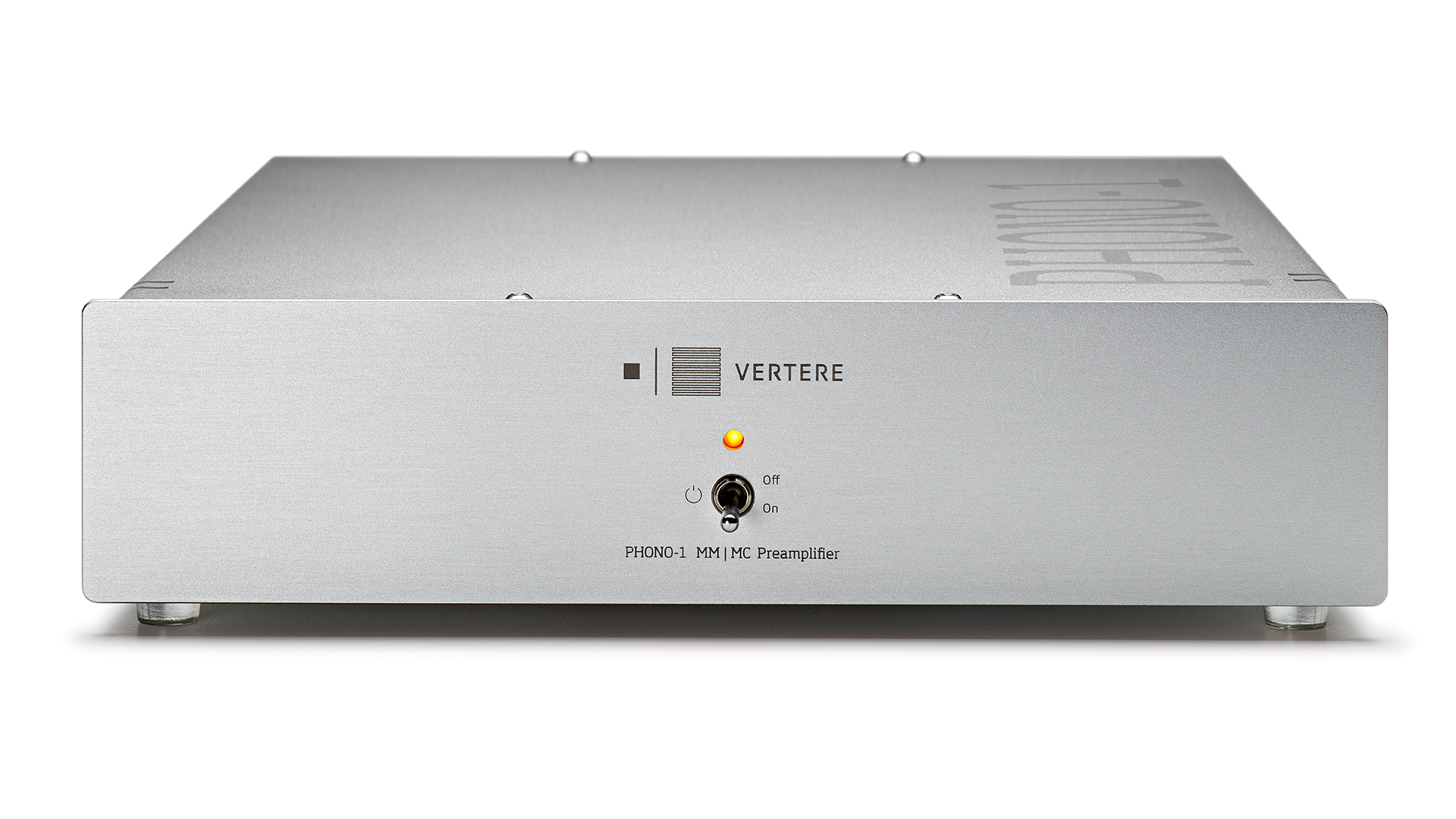
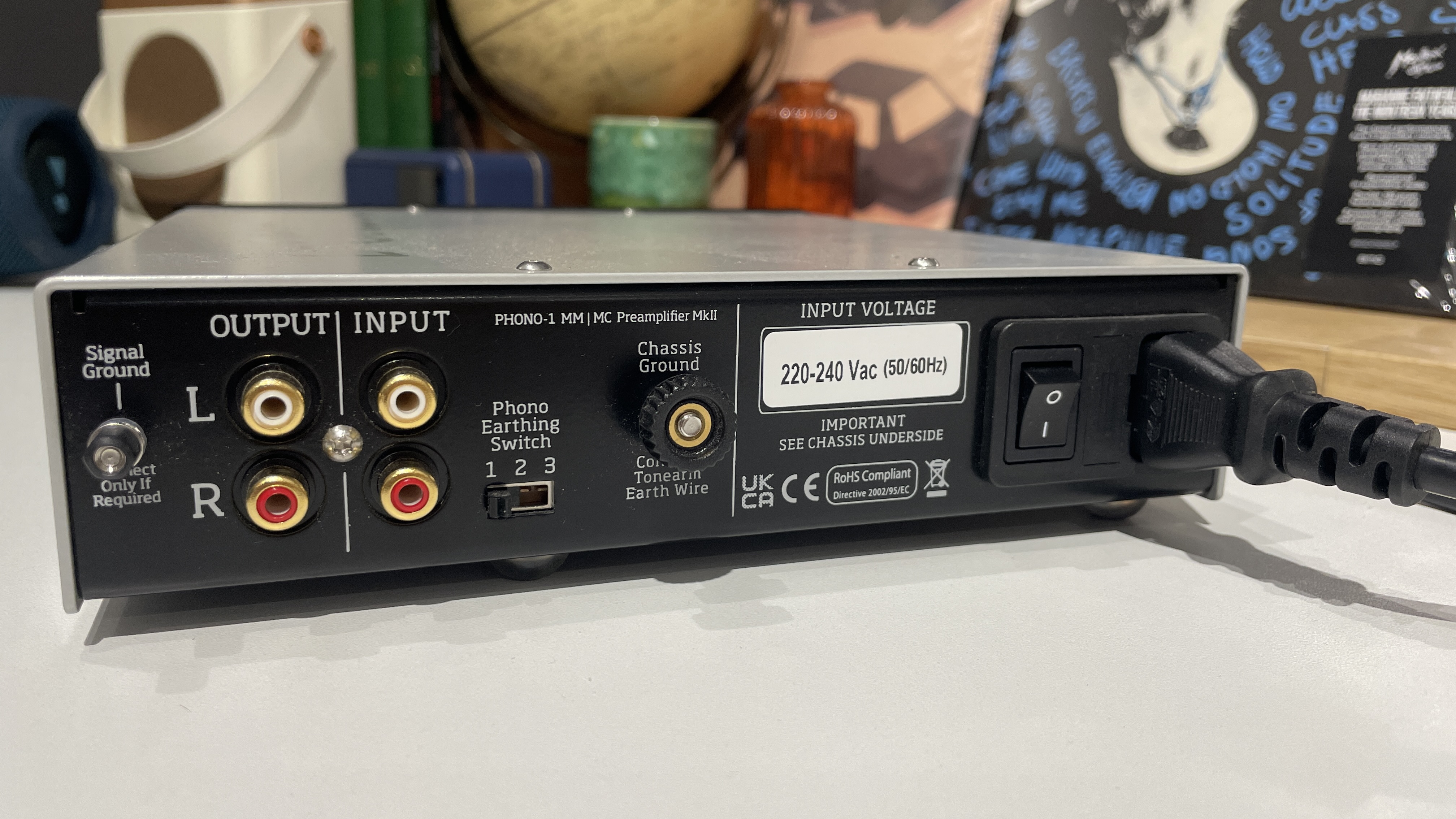
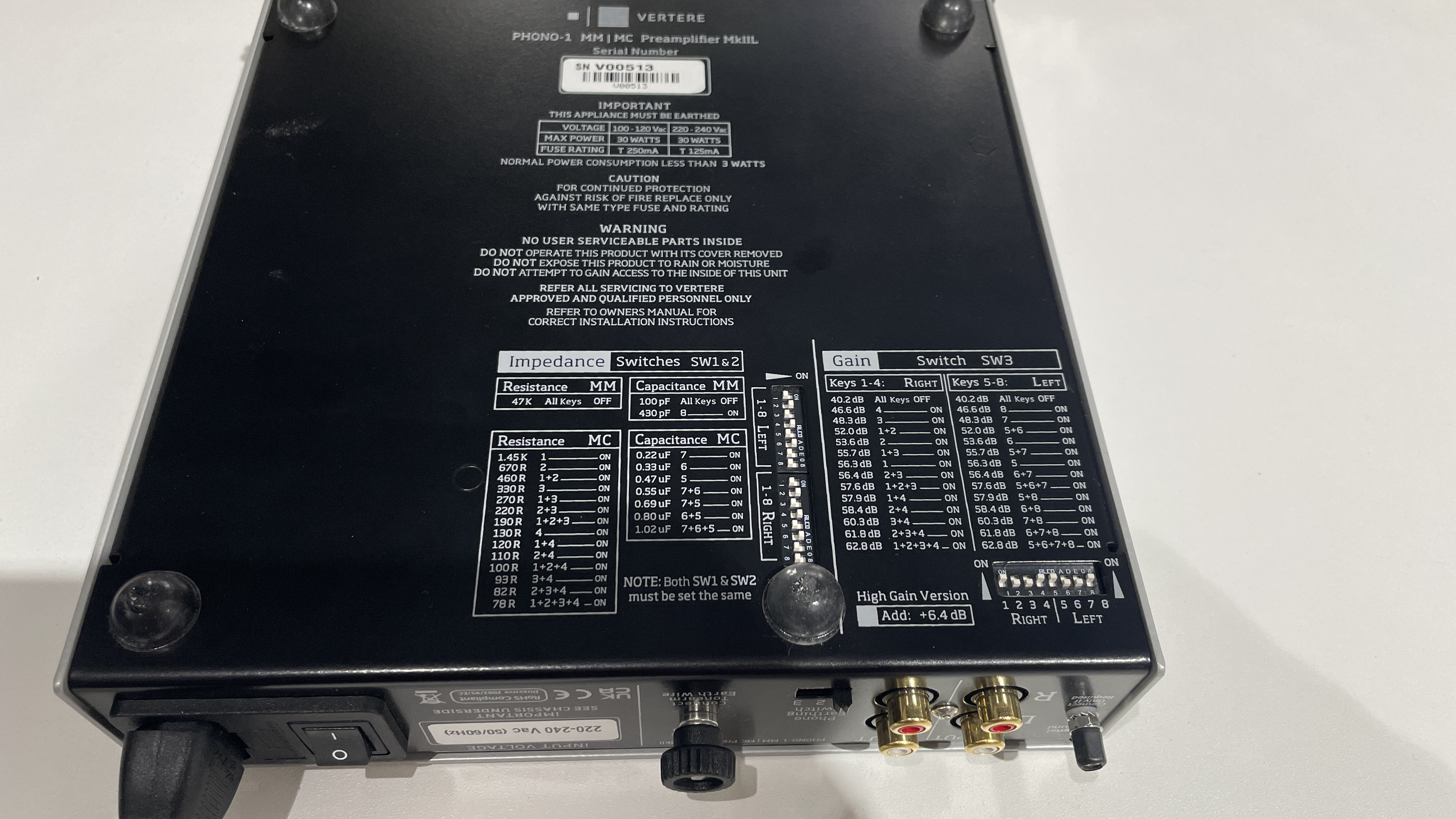
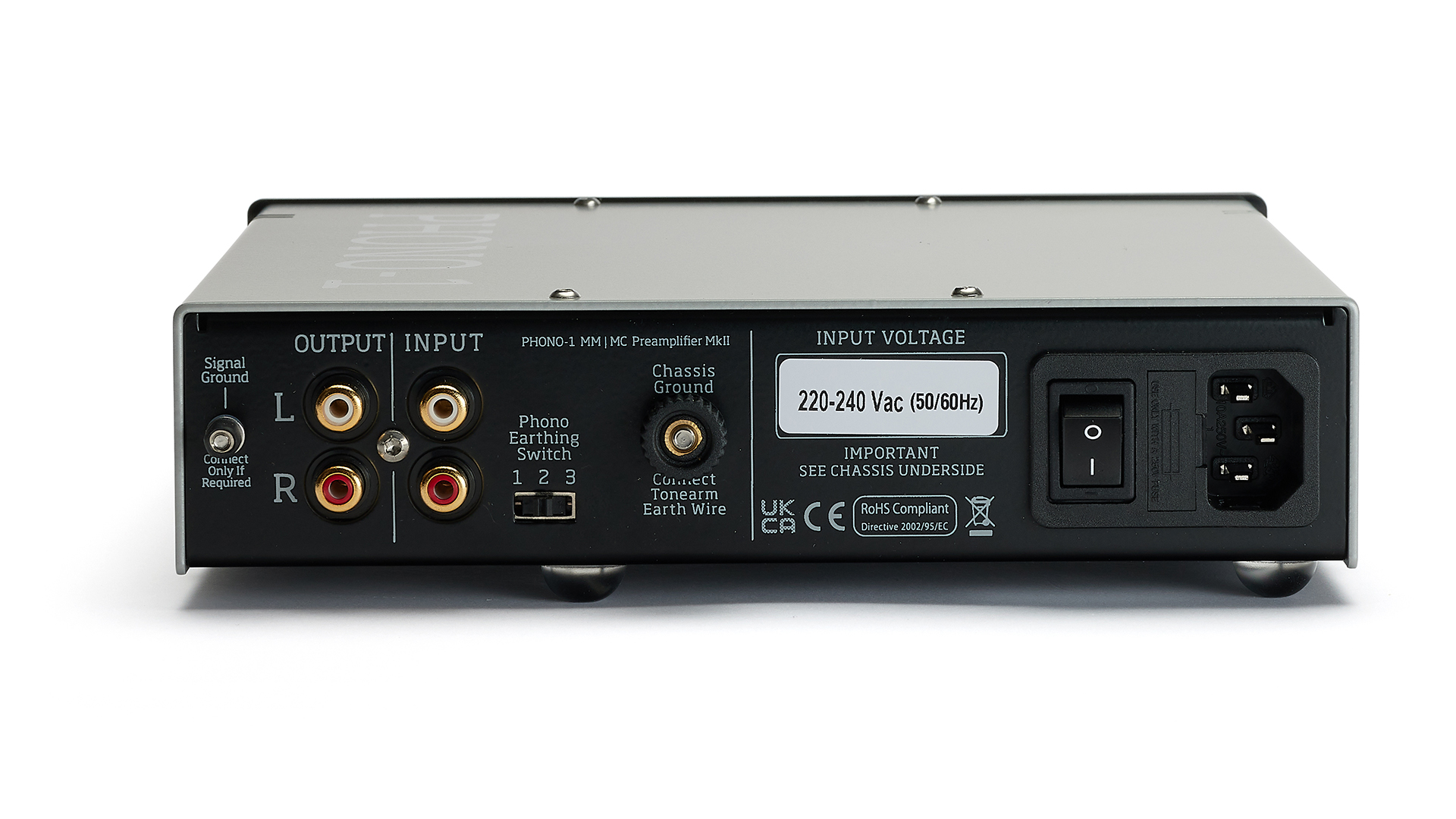
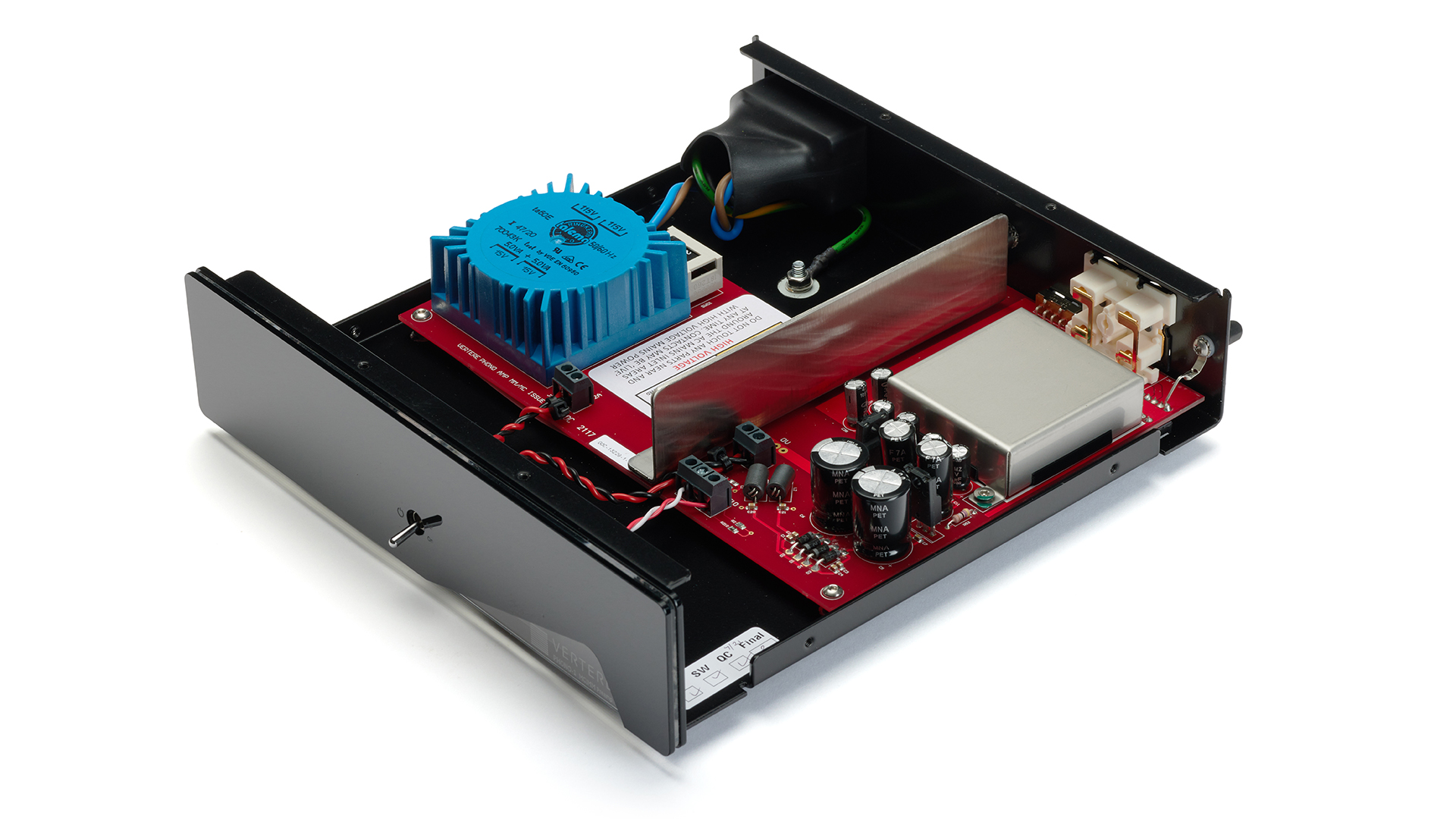
Specifications
Reasons to buy
Reasons to avoid
Vertere already had a great phono stage on its hands, but this updated version manages to deliver significant performance gains, thanks to some careful housekeeping and honing of the circuit board and power supply.
The tidy little box remains the same; an orange power LED is the only addition to the design.
The new Phono-1 MkII L is a brilliant performer, with a useful selection of features and adjustments that should help you get the most from any cartridge. Its detailed, musical delivery makes it a joy to listen to.
We love the scale of performance and the way the Vertere delivers the seismic dynamic shifts of the recording with so much enthusiasm. As with the previous generation (also an Award-winner), our main takeaway after hearing this phono stage is that it makes listening to music interesting and, where appropriate, fun. And what more could we ask from any hi-fi product?
If you’ve got an earlier version of the Phono-1 don’t worry about swapping it out for this new one. For new buyers, don’t hesitate to go for this version as it's a clear step up and worth the price hike (now around £1450 / $1895 / AU$2700).
Given a source and system of appropriate talent, it remains one of the finest phono stages we’ve heard at this higher price.
Read the full Vertere Phono-1 MkII L review
Also consider
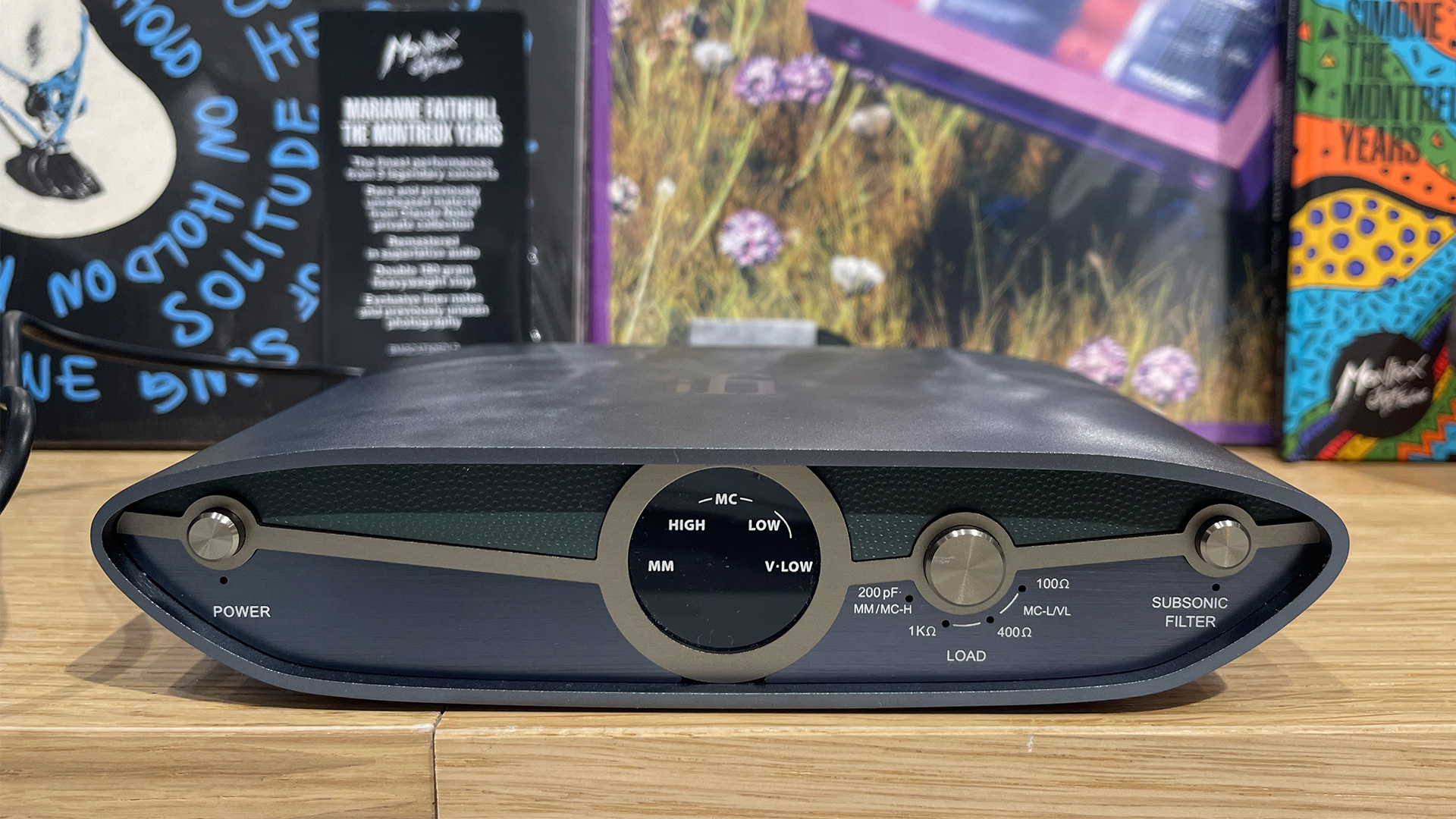
- iFi Zen Phono 3: For its price and compact size, this model packs a lot in: MM and MC cartridge support, low-noise power supply, and a clean, refined, smooth and spacious sound. The MM-only Rega Fono MM Mk5 digs out more detail, has more energetic timing and dynamics and is more expressive overall, but the iFi is a decent and versatile alternative.
- Graham Slee Gram Amp 2 Communicator: Low on frills, high on quality: this dinky device is a long-standing favourite with vinyl fans and the What Hi-Fi? review team. Superb detail, excellent timing, and ferocious dynamics still impress for £180. Adding the PSU1 power supply brings more punch and weight to the sound, but it is an extra cost.
- Rega Aura: Rega's more affordable phono preamps are easy to recommend here, but even more accomplished is the brand's flagship high-end moving-coil offering. The impeccably built Aura MC phono stage costs £4000 and is fully adjustable, with terrific clarity and insight levels, impressive agility and expressive dynamics – it's hugely exciting to listen to.
- Vertere Calon: The price is prohibitive for most but performance like this never comes cheap. If you've got a turntable that requires the very best, and the rest of your system is of comparative quality, you won't find a better phono stage at enabling your records to reach their full sonic potential. The Calon is as expressive and musically cohesive as they come.
How to choose the best phono preamp for you

Which phono stage you need is entirely dependent on what your existing turntable system is, and your budget.
If you have a budget turntable, then an affordable phono stage that's simple to use and is compatible with your (most likely) moving magnet (MM) cartridge is the only parameter you need to consider. If you're a hi-fi enthusiast with a more premium or high-end turntable and enjoy fine-tuning your system and swapping out different MM and moving coil (MC) cartridges like a mad scientist experimenting for the best sound quality, then you'll want a phono stage with plenty of flexible cartridge loading and gain adjustments to suit your matching high-end system, and more inputs.
Phono stages typically only have one set of inputs (for the turntable) and one set of outputs (to the amplifier). Even those on the entry-to-mid-level price range now increasingly let you switch between MM and MC cartridges – although beware that plenty still specialise in one type only.
High-end phono stages tend to be larger (separate power supply units and better components all take up space), while budget options have a smaller footprint. Compatibility trumps design in this category, although it's not hard to find nicely made boxes.
Ultimately, which phono stage you choose will depend on what's most appropriate for the turntable and cartridge you already have, so make sure you've got your deck's specifications handy. It's the same case if you're looking to upgrade your current vinyl set-up, although it's always worth looking at the next model up for future-proofing.
Of course, sound quality is the final decider: we'd recommend demoing your new phono preamp with your existing deck and system if possible, to ensure you get the best-sounding performance when spinning your vinyl records.
How we test phono preamps
We have dedicated, acoustically treated testing facilities in Reading and London, where our team of experienced, in-house reviewers test the majority of hi-fi and audio kit that passes through our door – including phono preamps (or phono stages).
Sound quality is key in forming our verdicts and star ratings. What Hi-Fi? is all about comparative testing, so we listen to every phono preamp we review against the current leader in its field and price point to gauge how it compares to the best-in-class competition. We are lucky to be able to keep all What Hi-Fi? Award winners in our stockroom, so we can always truly compare new products against our current best-in-class products in each price band.
We are always impartial in our testing and ensure we hear every phono preamp at its optimum – with the matching turntable and appropriate cartridge(s) of course. We'll use them in their best use case with different partnering source kit and speakers, as well as play plenty of different types of music and records through them. Here's a sample of the best vinyl records we use during testing.
We give phono stages ample time to run in and listen to them over days and weeks to get a full picture of how each model performs.
All review verdicts are agreed upon by the team as a whole rather than an individual reviewer, to eliminate any personal bias and to ensure we are consistent across all our reviews. There's no input from PR companies or our sales team when it comes to the verdict, and What Hi-Fi? is proud of having delivered honest, unbiased reviews for nearly five decades.
You can read more about how we test and review products on What Hi-Fi? here.
FAQ
Why do I need a phono stage?
The audio information stored in a record's groove measures as small as a micron (1000th of a millimetre), so the scale of the task to retrieve it and playback through your speakers is immense – one that your standard line-level stereo amplifier isn't able to do on its own.
The physical limitations of vinyl mean that the original audio signal has to be altered before it can be recorded onto its tiny grooves – low frequencies are reduced in level and the high frequencies are boosted. The curve that governs this equalisation standard was set by the RIAA (Record Industry Association of America) in 1954.
This is where the phono stage (or phono preamp) comes in. It has two jobs. Firstly, it has the reverse response built into it – one that boosts bass and flattens treble to exactly the right degree, which should result in a tonally even presentation for the audio signal.
Secondly, it acts as an amplifier. The cartridge signals from tracking the groove can be as low as a thousandth of a volt (CD’s output is specified at 2V, for instance) so the signal has to be amplified massively before the line-level stage of a stereo amplifier can take over to deliver the sound through your speakers.
Learn more about how a vinyl record makes a sound
VIDEO: Watch a needle read a vinyl record in microscopic detail
Is a separate phono stage better?
As with many pieces of standalone hi-fi kit, the theory goes that using separate pieces of kit to do individual jobs will almost always provide a superior sound. In a turntable set up, keeping as many bits of circuitry away from the platter, tonearm and cartridge is preferred, so there are no minute vibrations or electrical interferences that will affect the cartridge's highly precise job of accurately tracking the tiny grooves in a record to reproduce sound.
While many turntables come with decent enough phono stages built in, we have always found that a separate phono stage, with its own power supply, will deliver the better performance. Even budget models such as the Rega Fono Mini A2D or Graham Slee Gram Amp 2 Communicator will bring better precision, detail and rhythmic agility to your turntable system.
How much difference does a phono stage make? Will a phono preamp make my turntable sound better?
A phono stage's job is essential if you want your turntable setup to make a sound through speakers when spinning records. A phono stage provides extra amplification – the output of a cartridge can be as small as a thousand times less than a typical CD player – and it equalises the tonal balance.
Vinyl isn’t physically able to accept large amounts of bass during the cutting process, so the tonal range of the music has to be skewed heavily towards the higher frequencies to make things work. On playback, the phono stage’s job is to rebalance this. A good phono stage will let your record player shine, a poor one will have you wondering what the vinyl fuss is about.
So how well a phono stage performs will have a direct impact on the overall sound you hear from your turntable system. It certainly pays to choose a good one, then.
Recent updates
- July 2025: No new entries, but checked prices and mentioned the new Lindemann phono stage we have in for testing.
- May 2025: Added the Vertere Calon as an ultra high-end option to the list of 'also consider' entries.
- March 2025: Added a new 'also consider' entry, updated new phono stages being tested, and checked all prices.
- January 2025: Checked all information is correct and updated where necessary.
- November 2024: Labelled the current 2024 What Hi-Fi? Award winners, and added an update log.
- July 2024: Checked through current products, prices and advice to ensure accuracy and added hands-on photo gallery for the Cambridge Audio Duo.
- May 2024: Added an Also Consider section to offer additional choices to consider when buying.
- February 2024: Updated our advice and testing process, and added FAQ section to help buyers with the most asked questions about turntables.
- January 2024: Added Rega Fono Mini A2D Mk2 entry following its five-star review.
- November 2023: What Hi-Fi? Award-winning products are labelled after the 2023 Best Buys and Product of the Year announcements.
MORE:
Need a turntable? Here's our pick of the best record players you can buy
Moving magnet vs moving coil cartridges: which is right for you?
16 of the best-sounding vinyl records for testing your turntable
The latest hi-fi, home cinema and tech news, reviews, buying advice and deals, direct to your inbox.

Kashfia is the Hi-Fi and Audio Editor of What Hi-Fi? and first joined the brand 13 years ago. During her time in the consumer tech industry, she has reviewed hundreds of products (including speakers, amplifiers, turntables and headphones), been to countless trade shows across the world and fallen in love with hi-fi kit much bigger than her. In her spare time, Kash can be found tending to an ever-growing houseplant collection and shooing her cat Jolene away from spinning records.
- Harry McKerrellSenior staff writer
